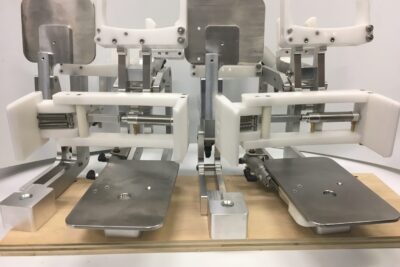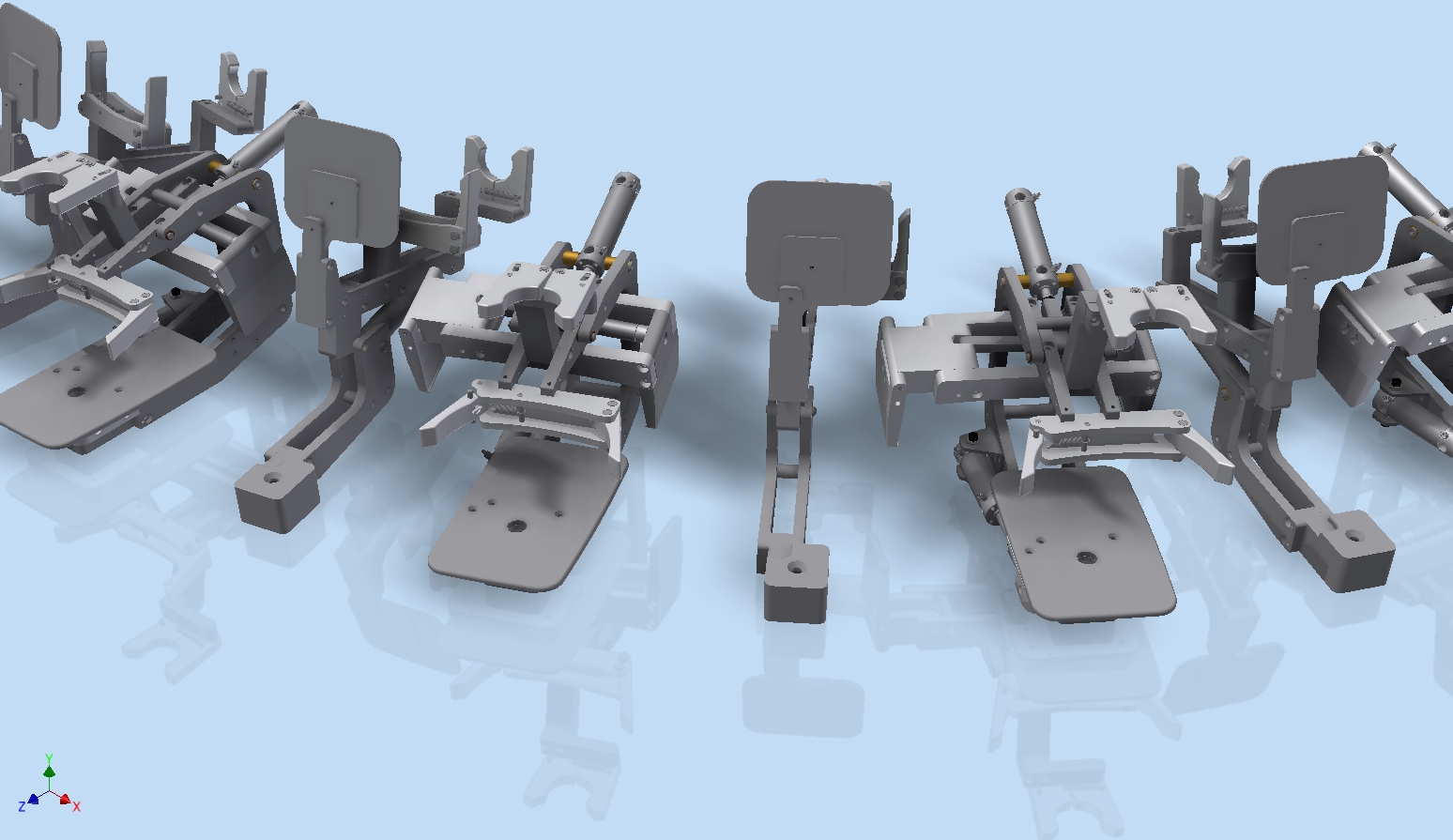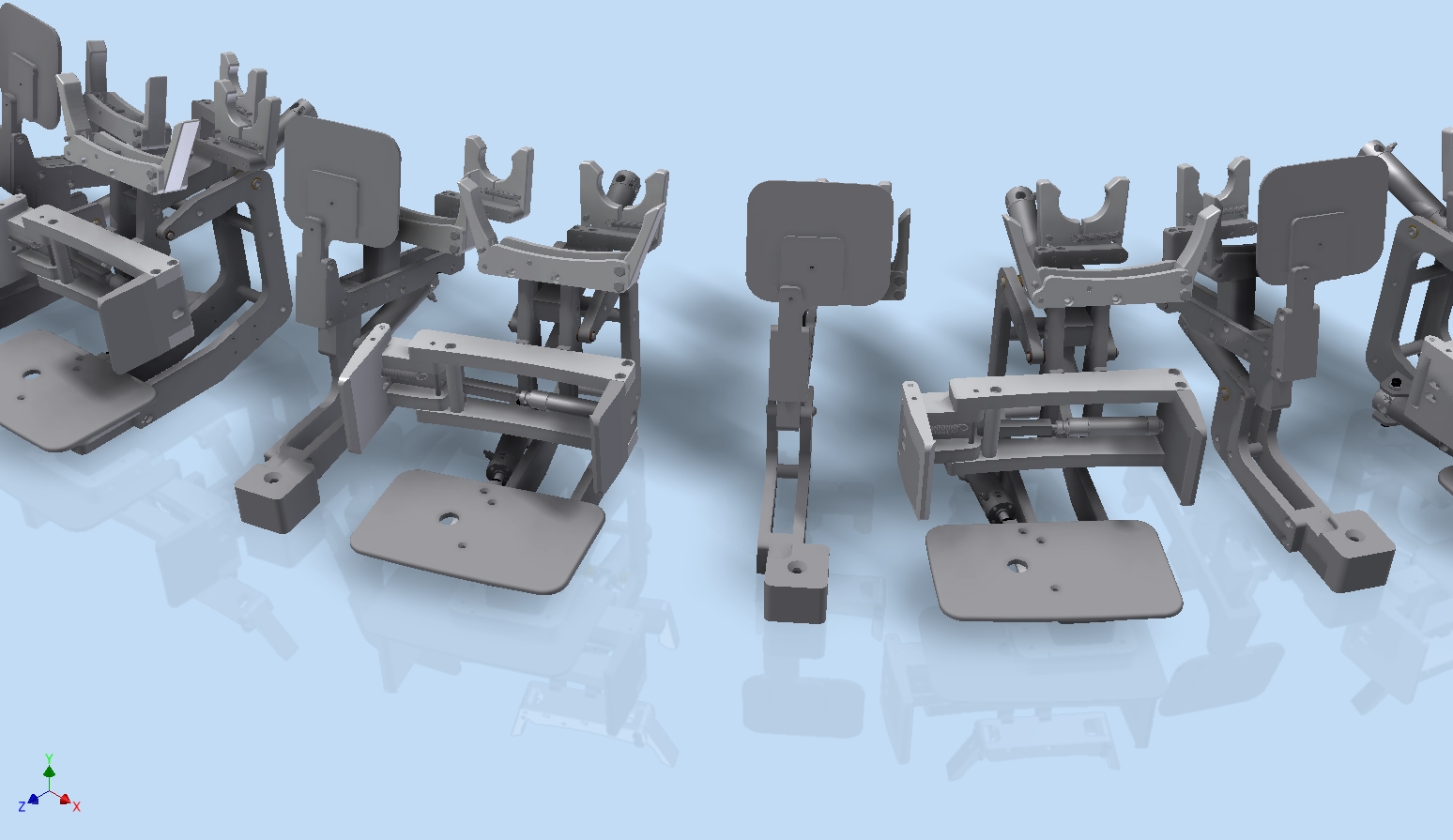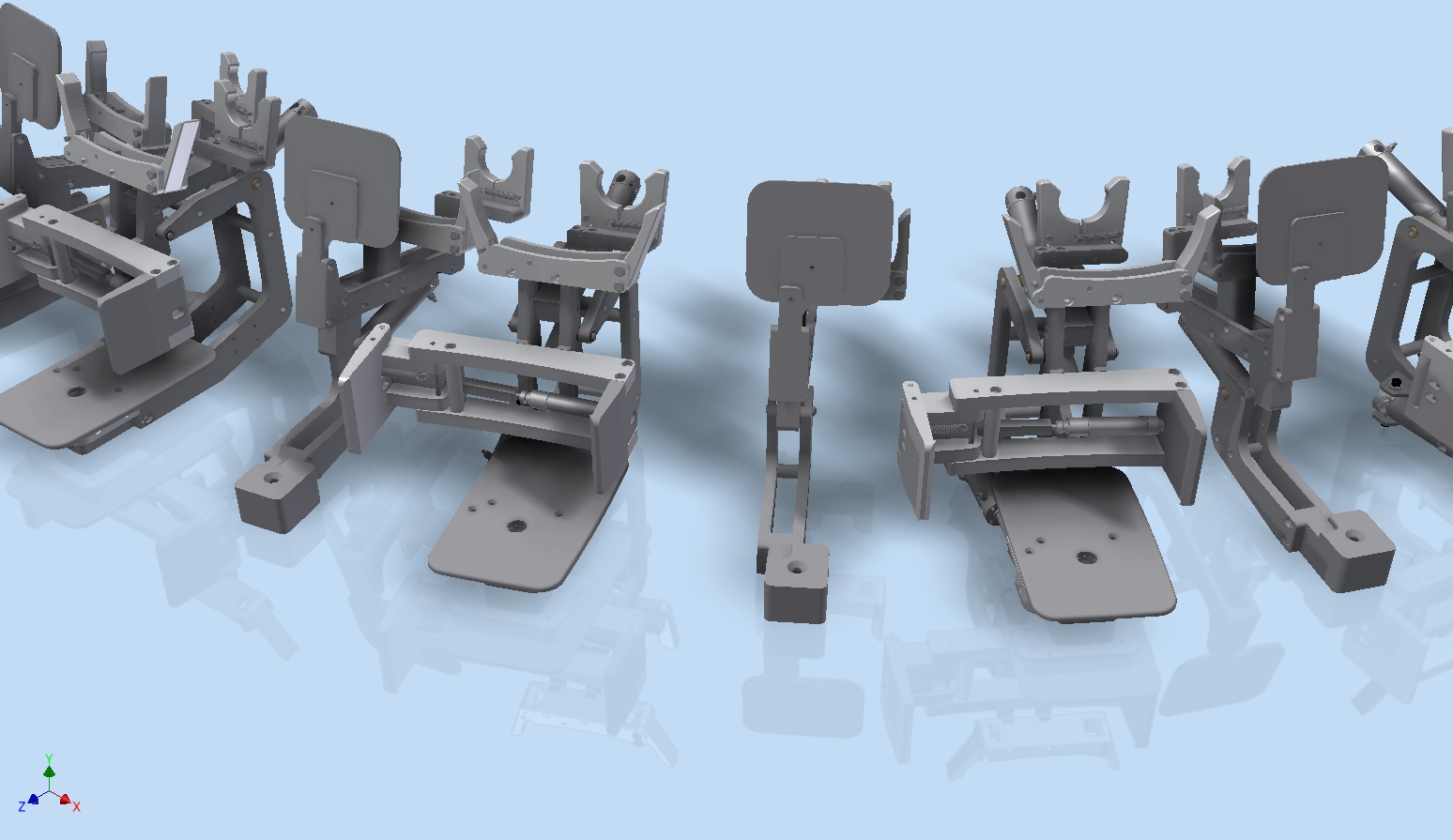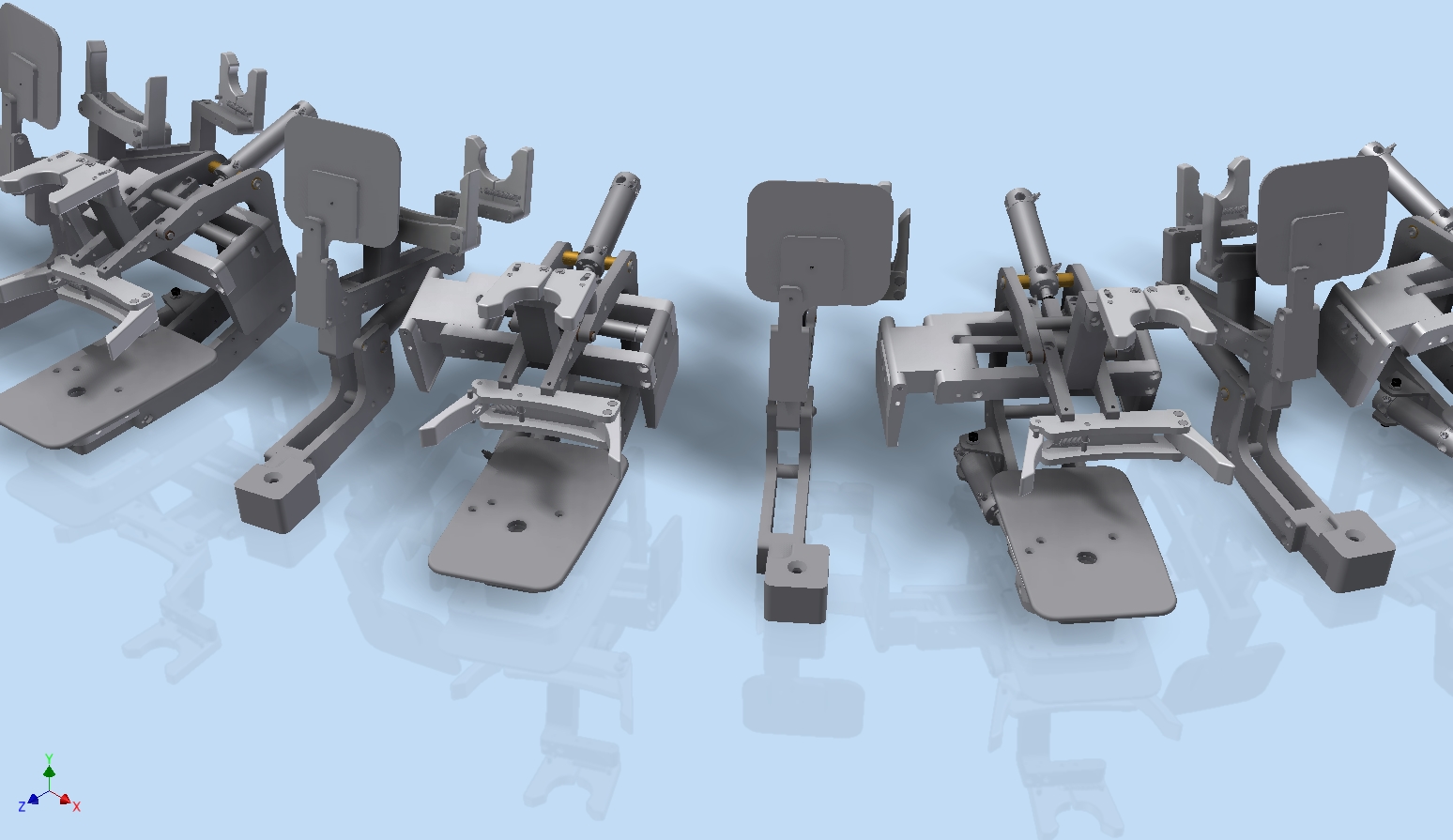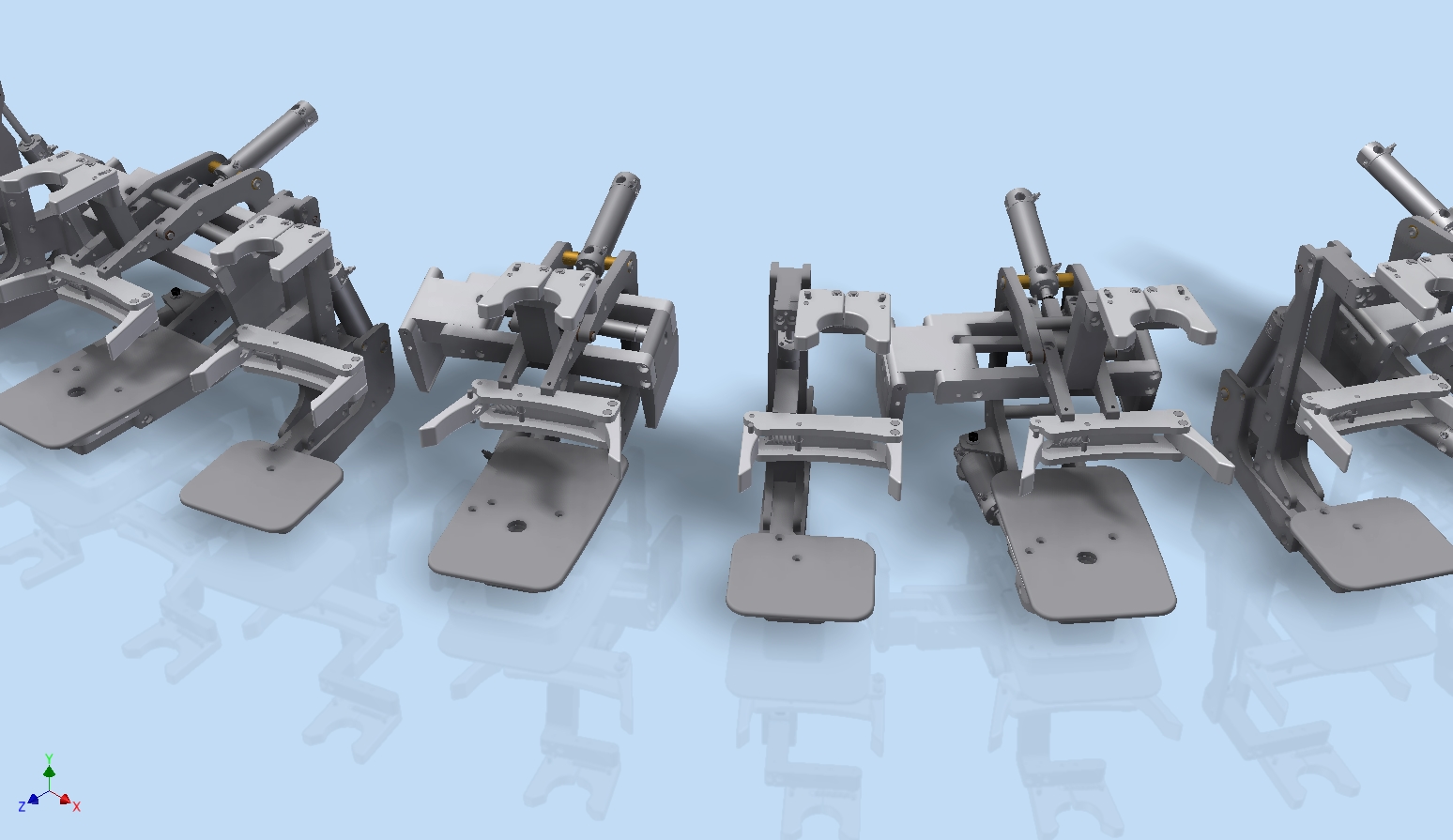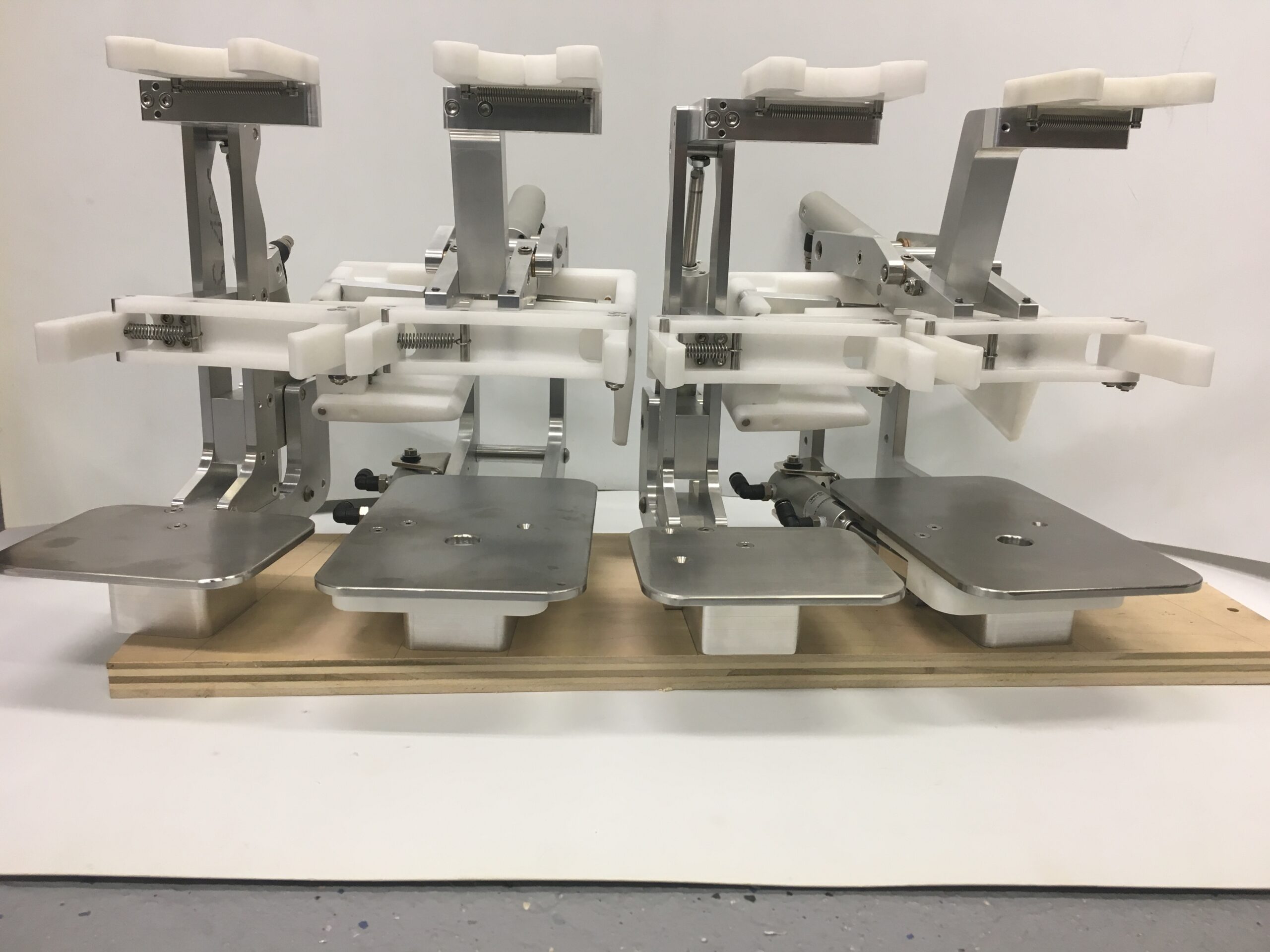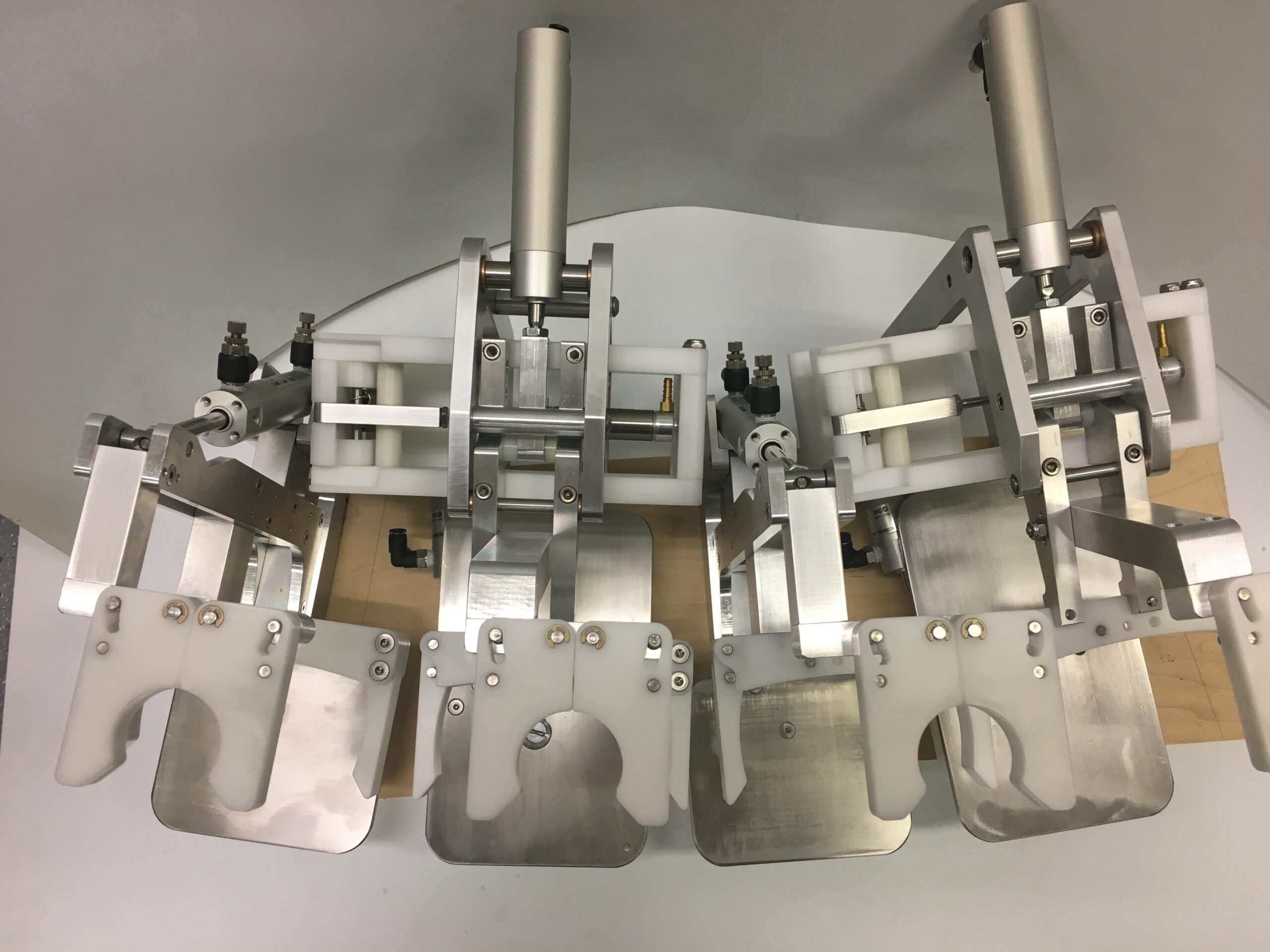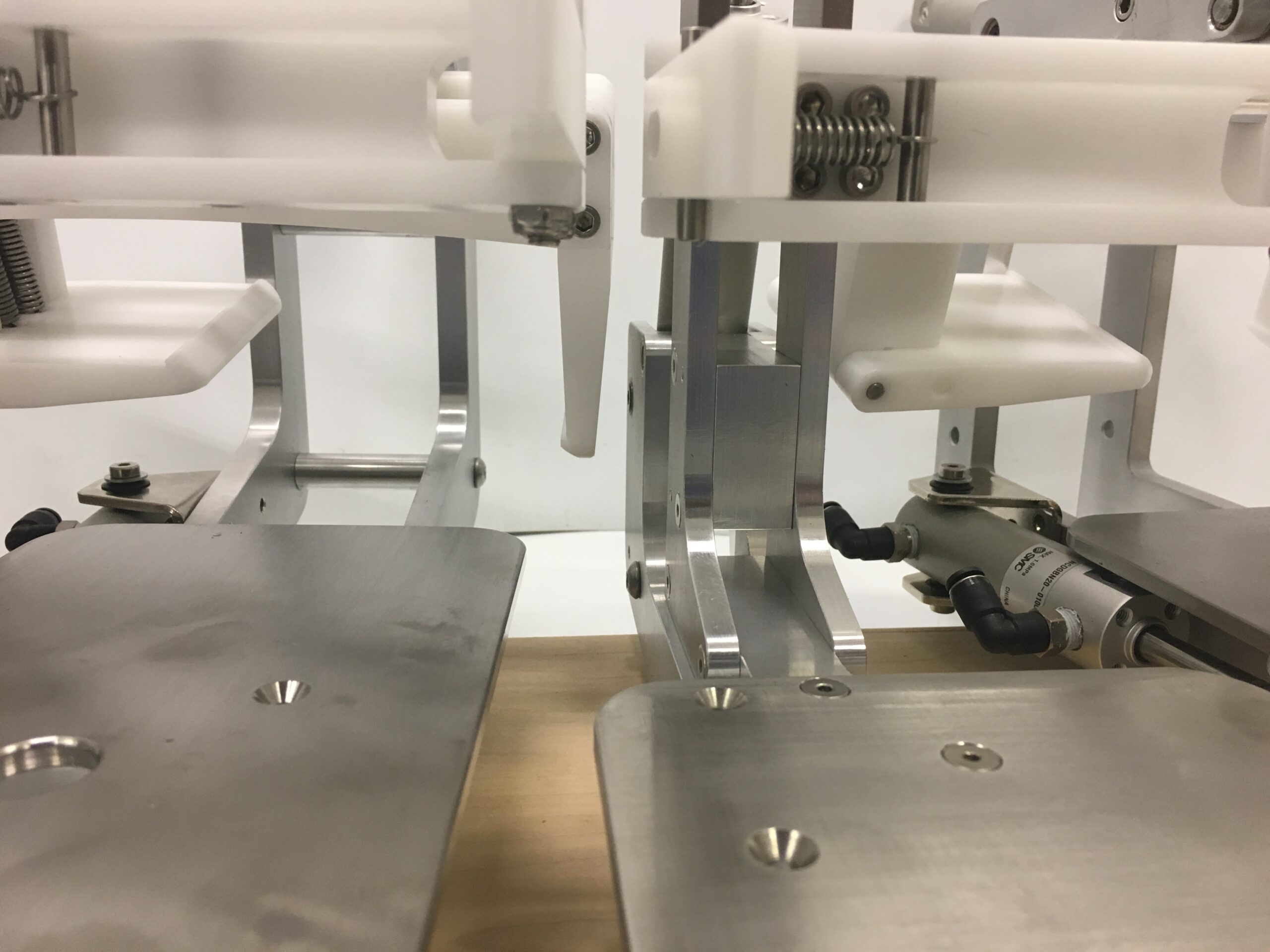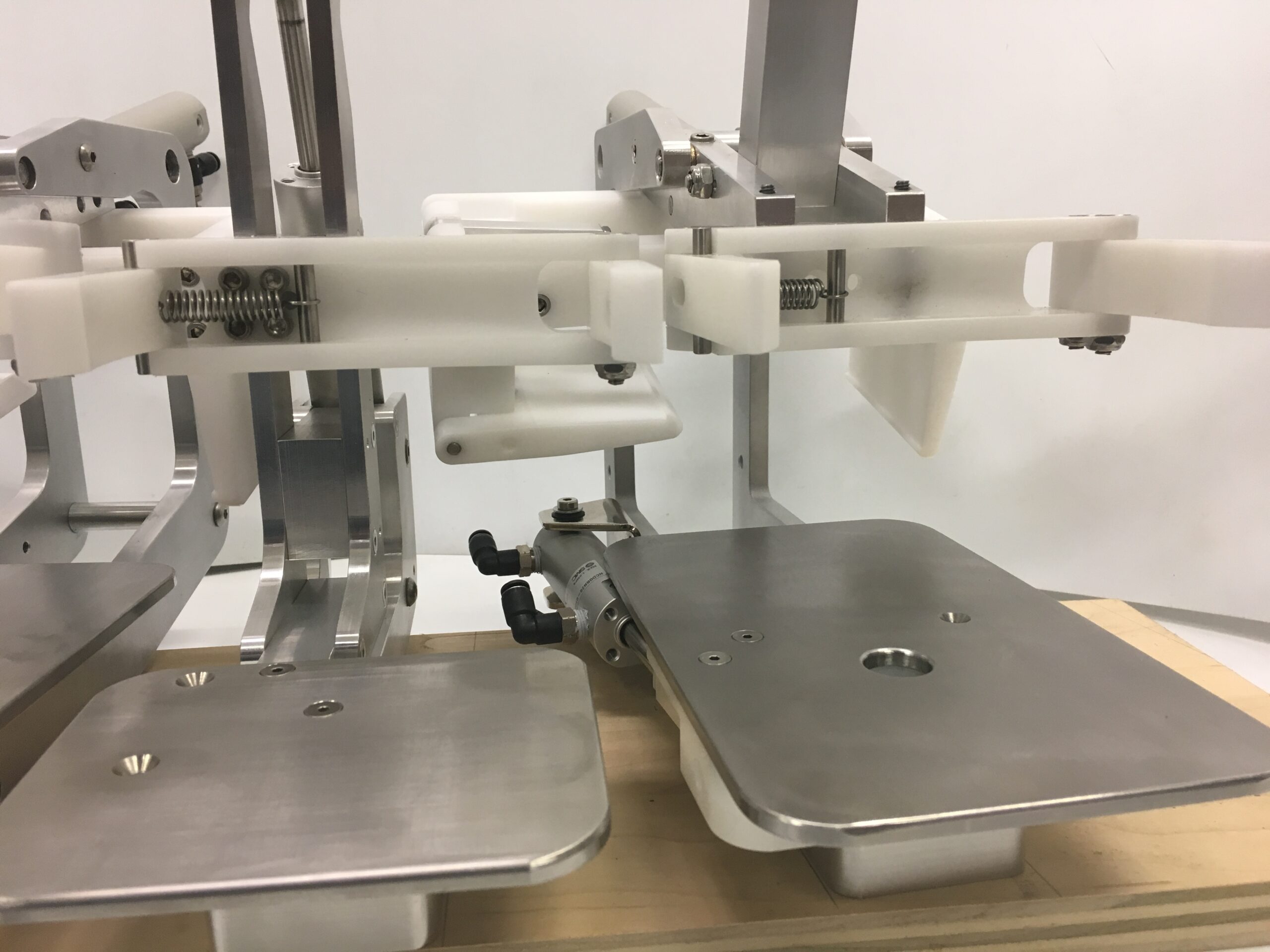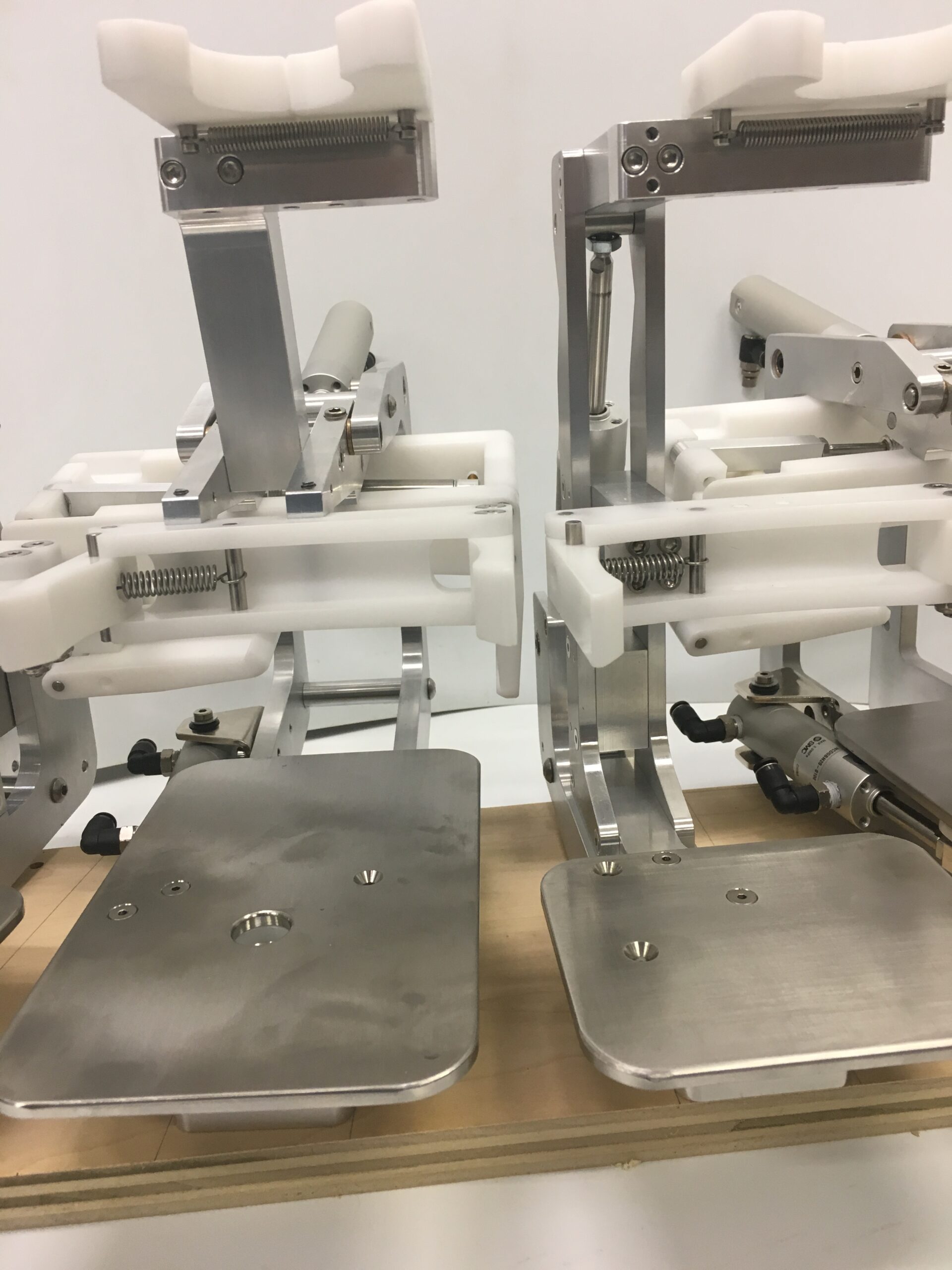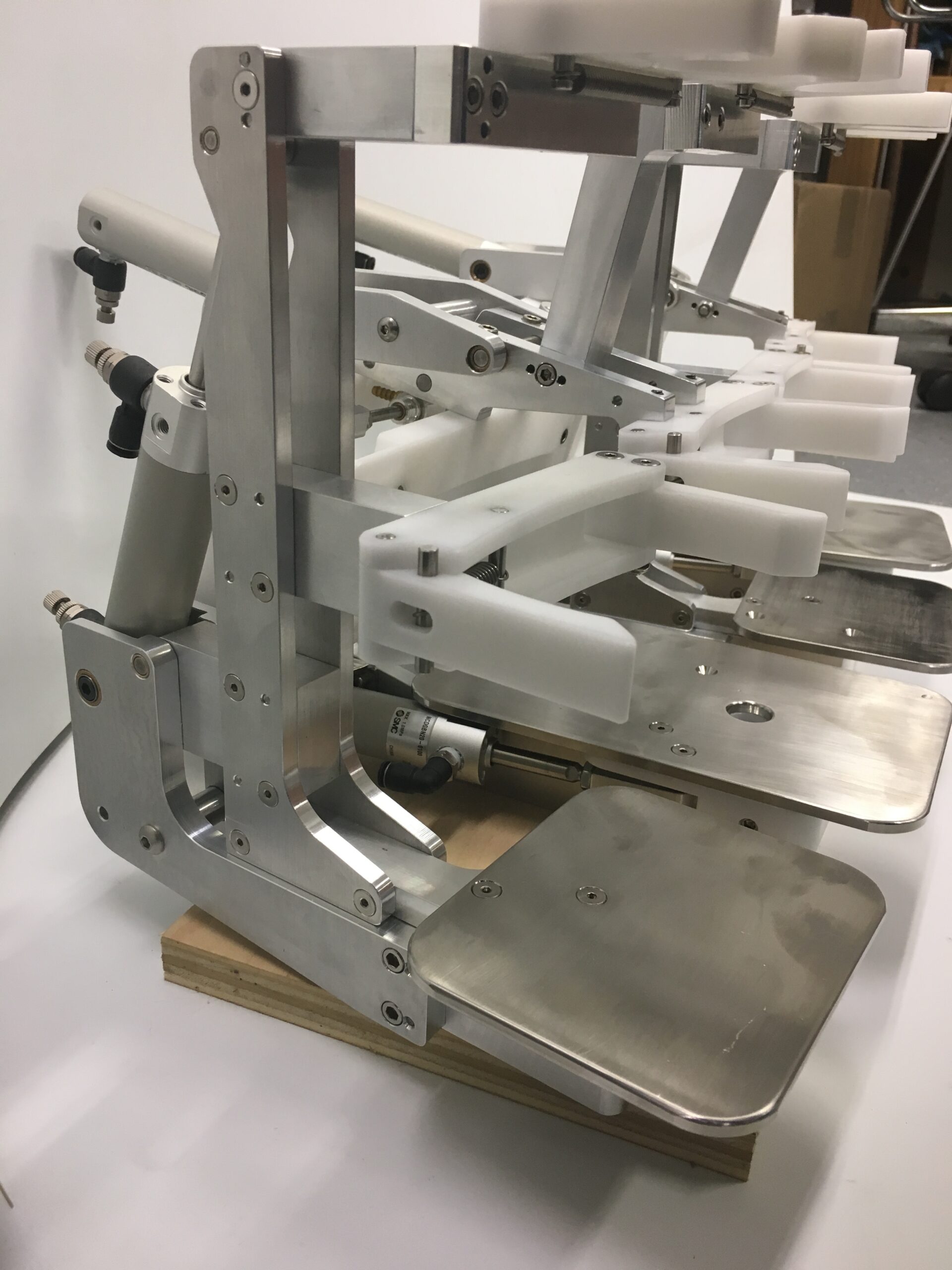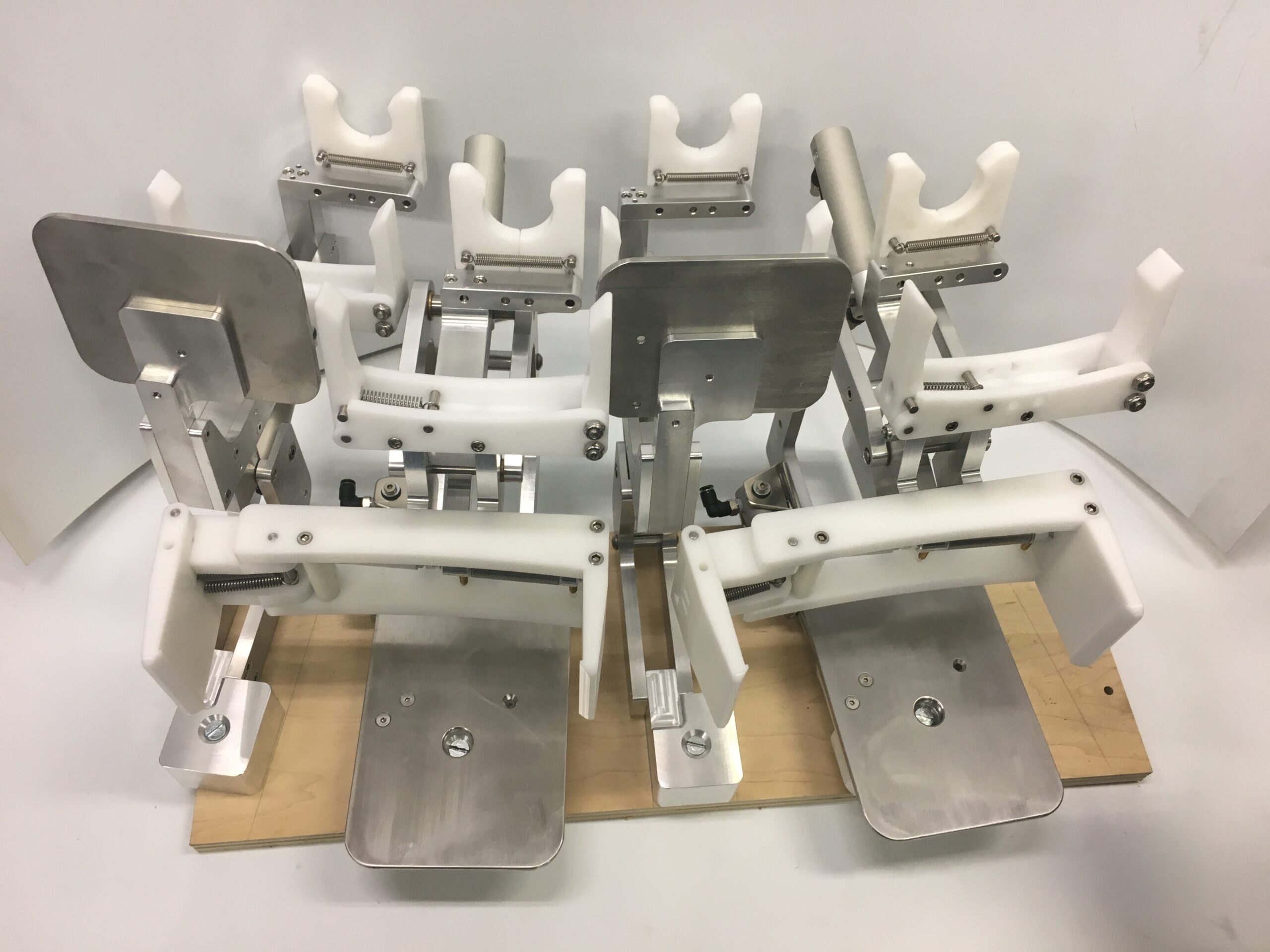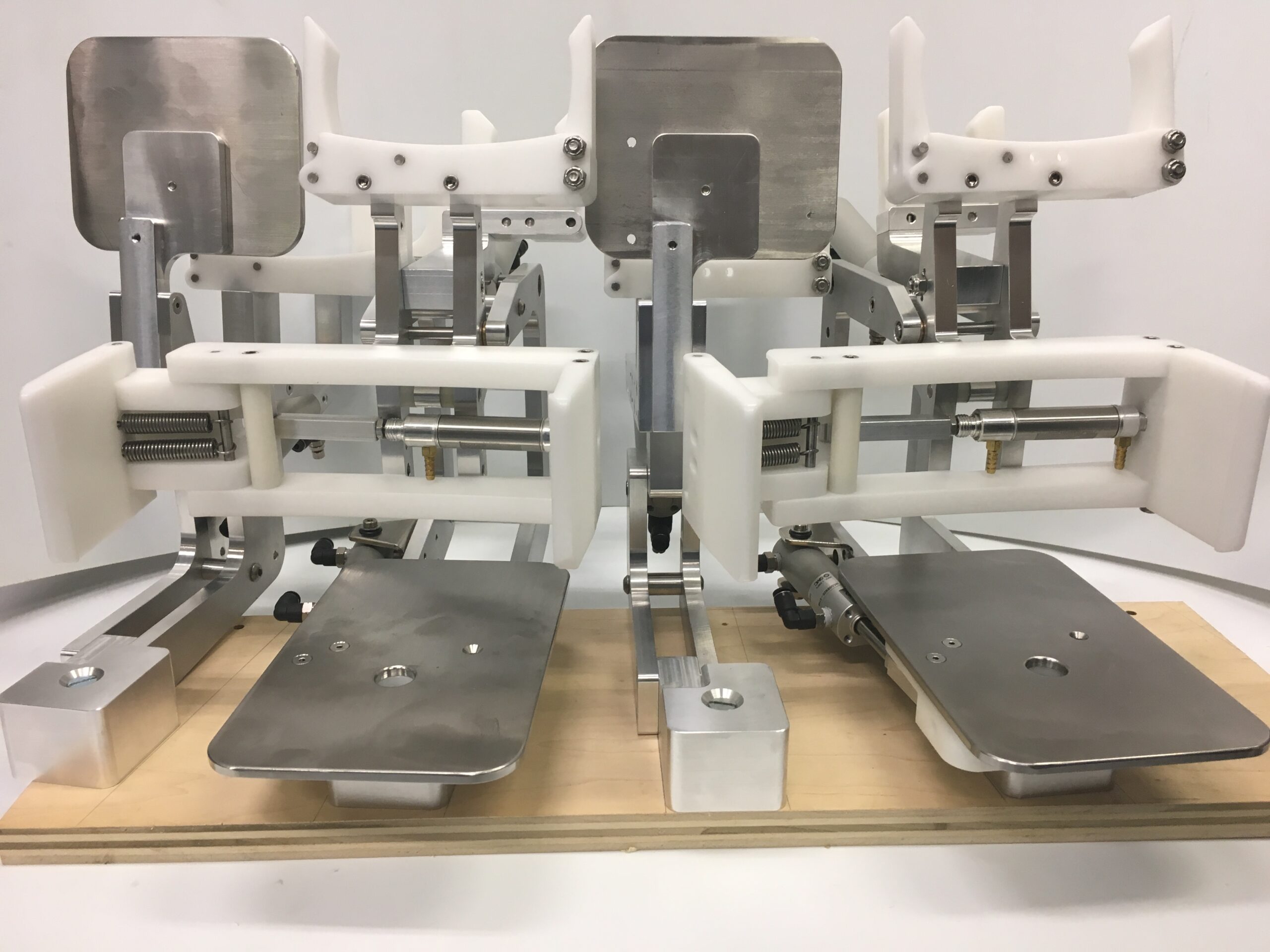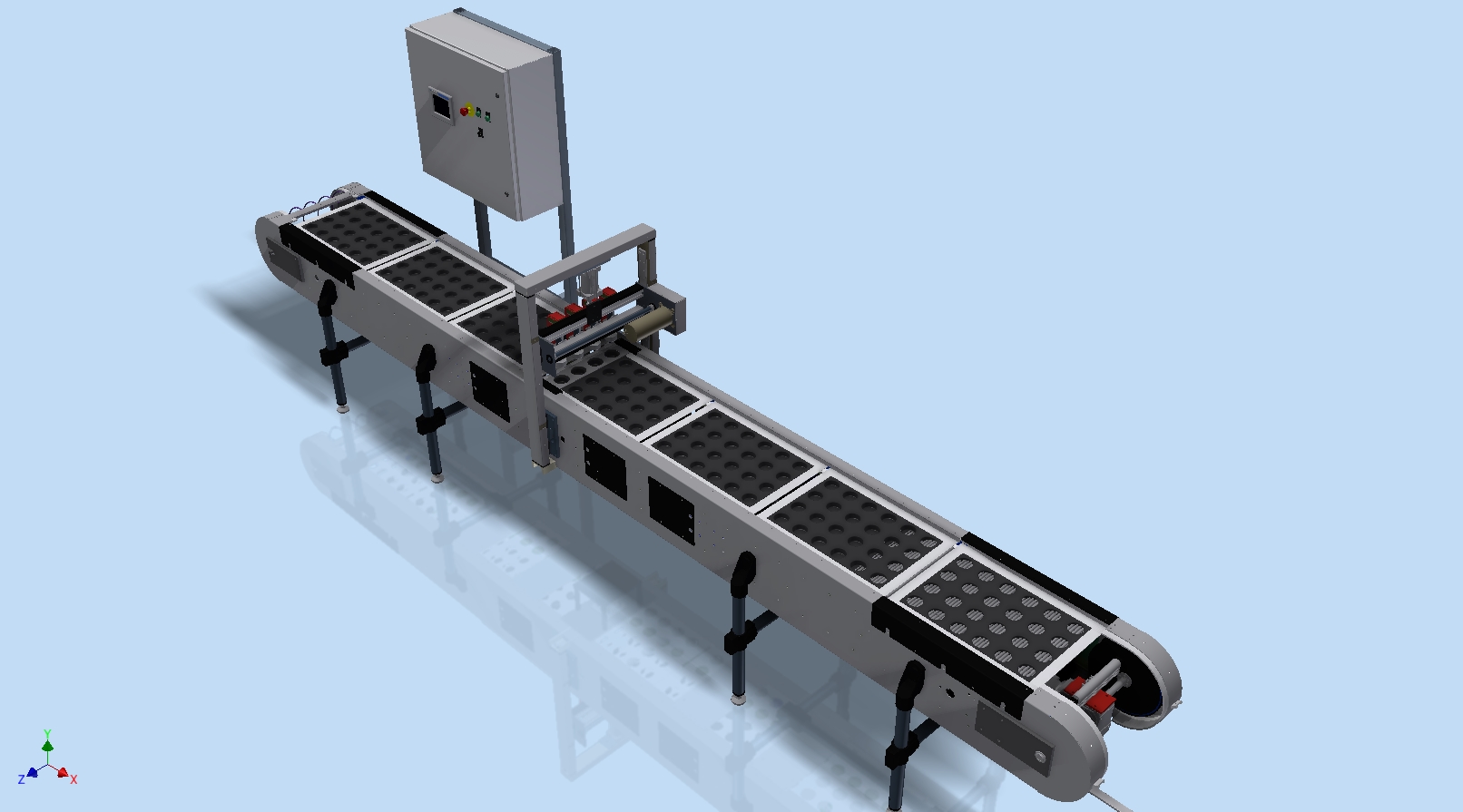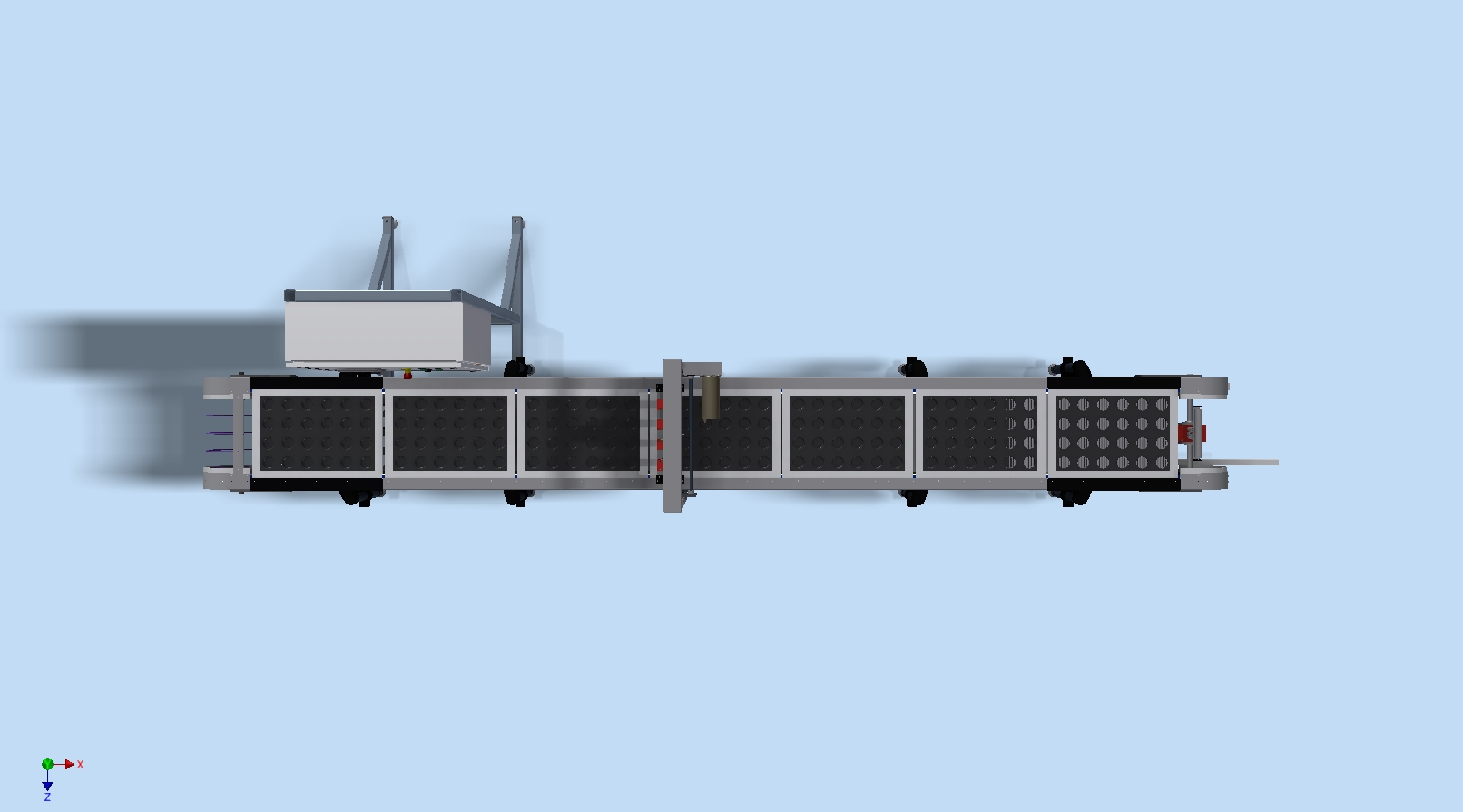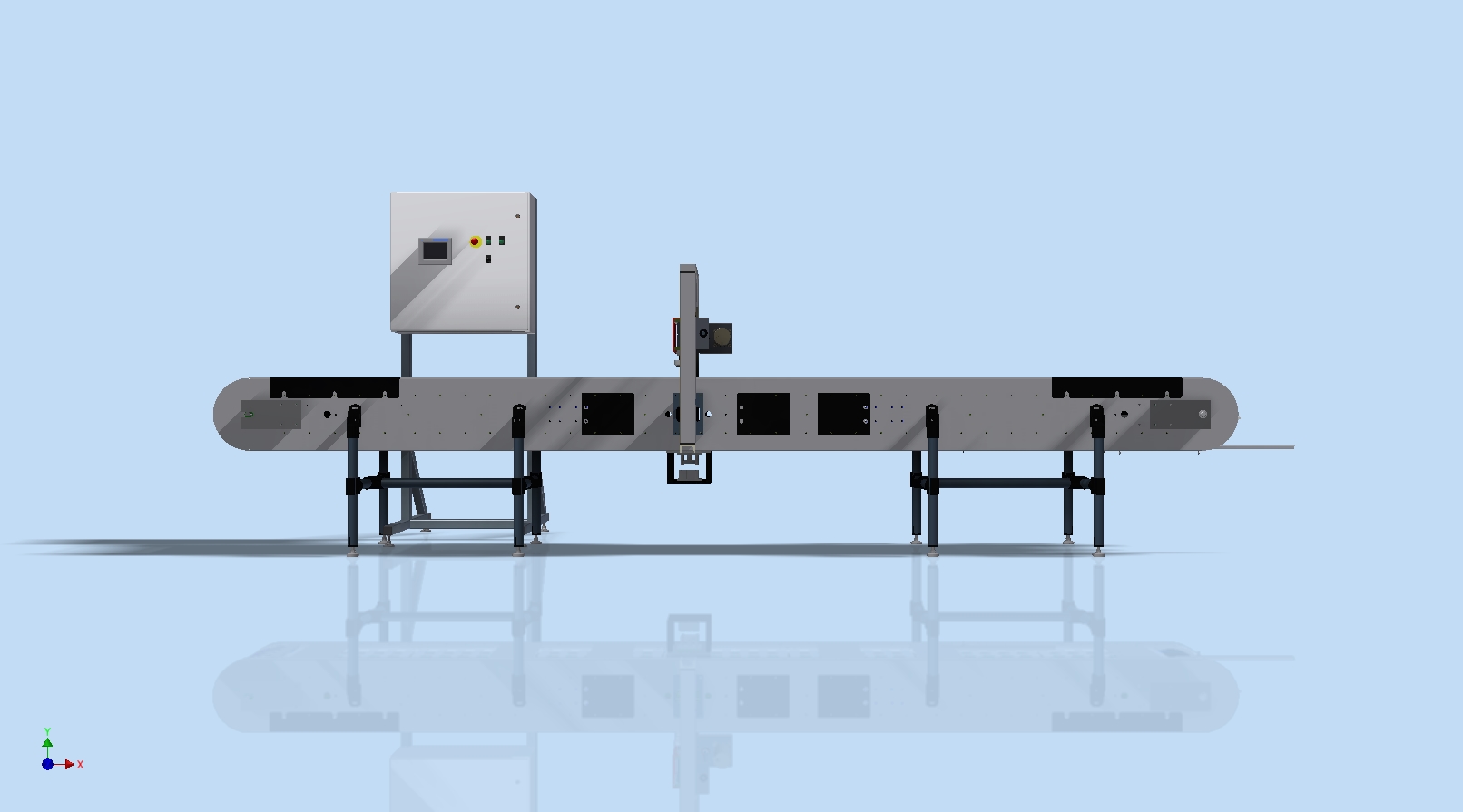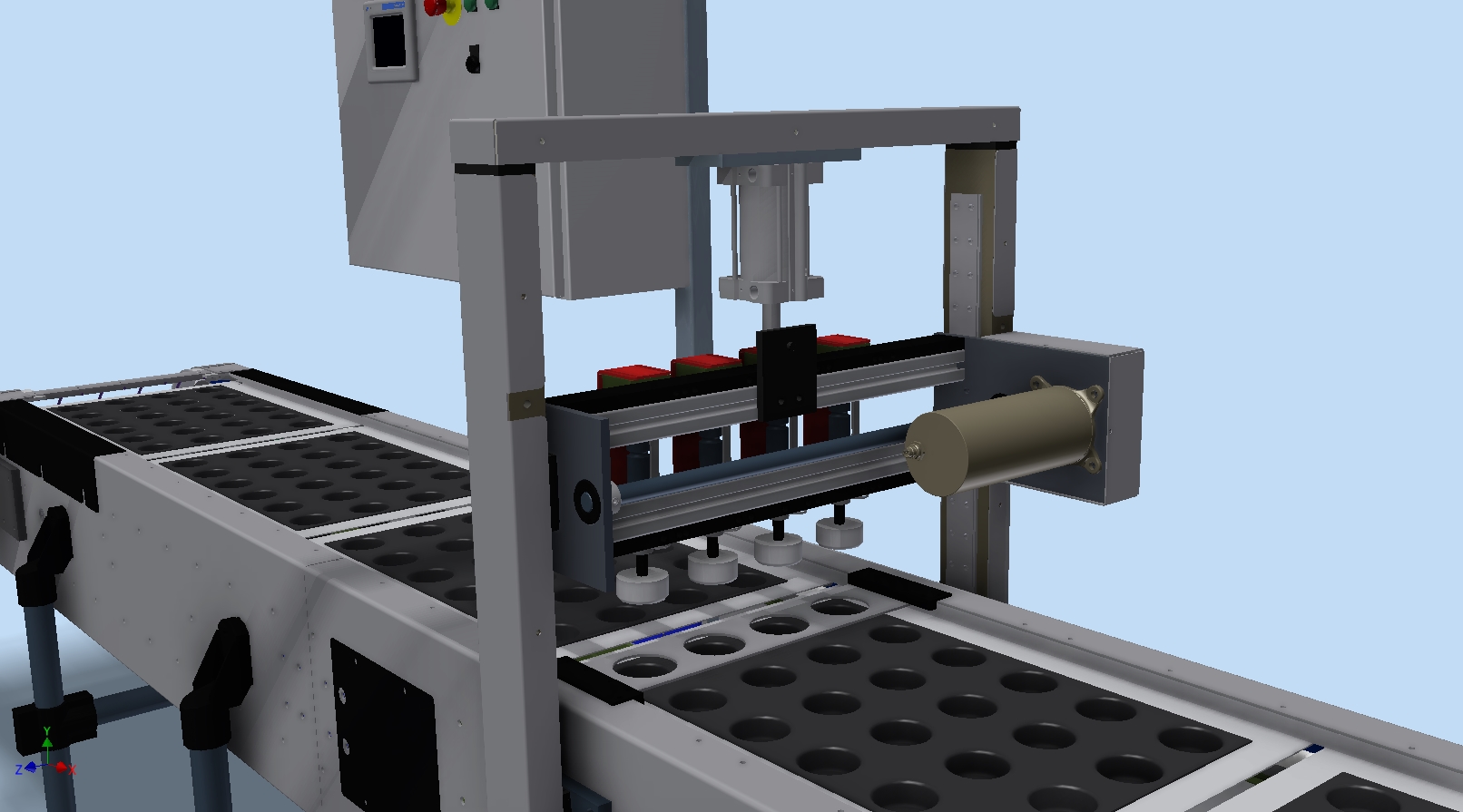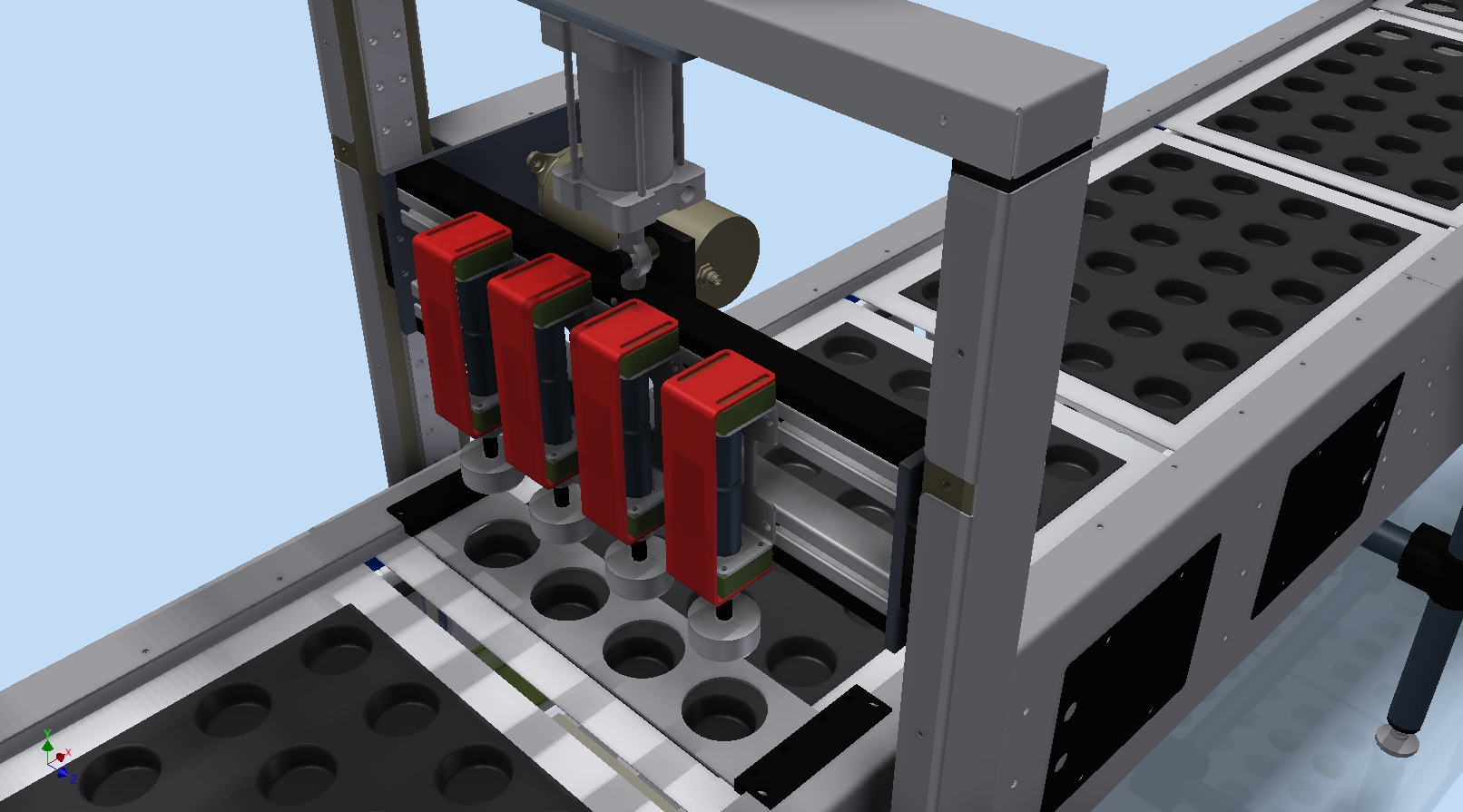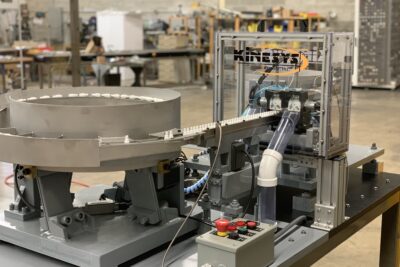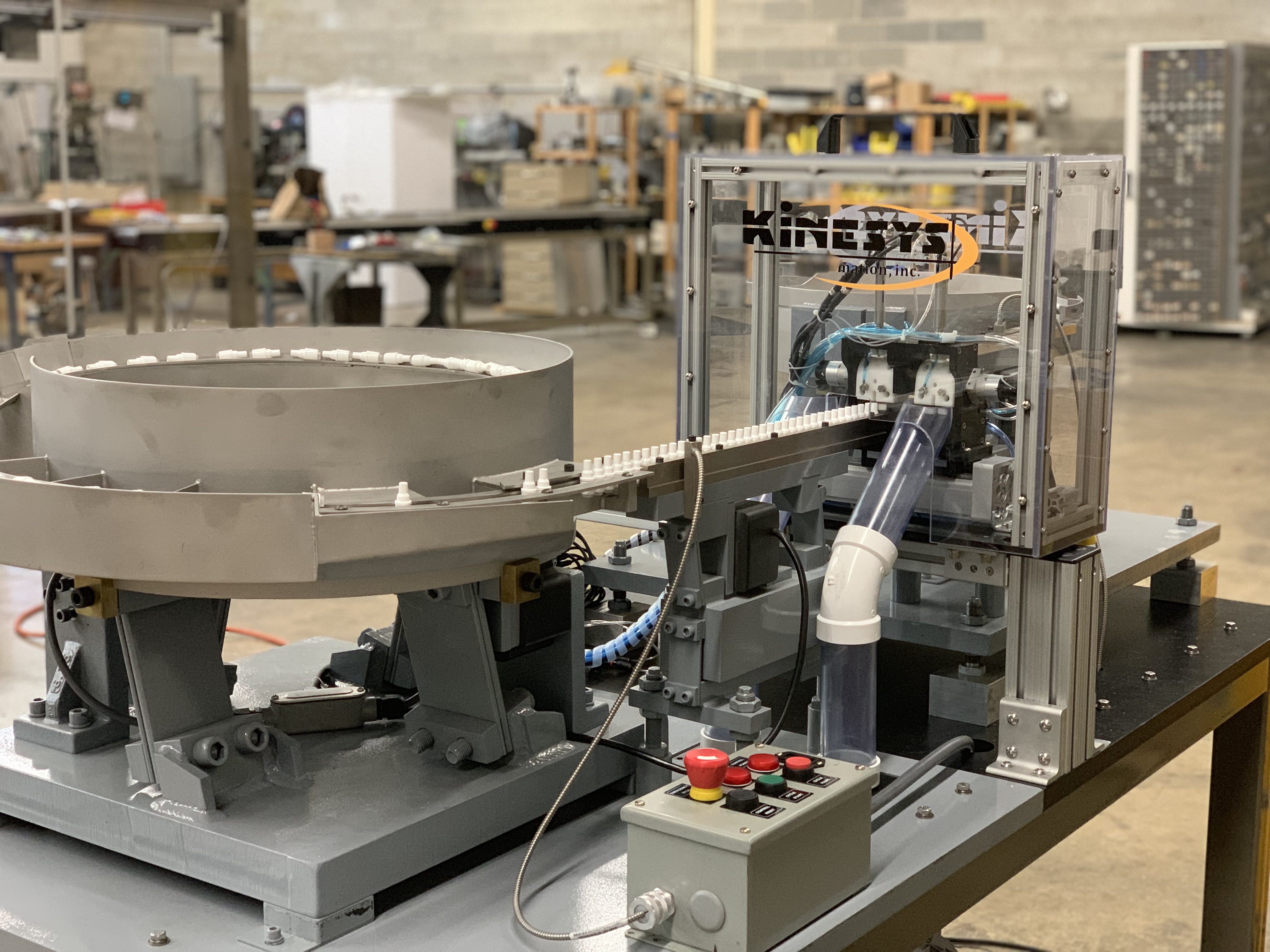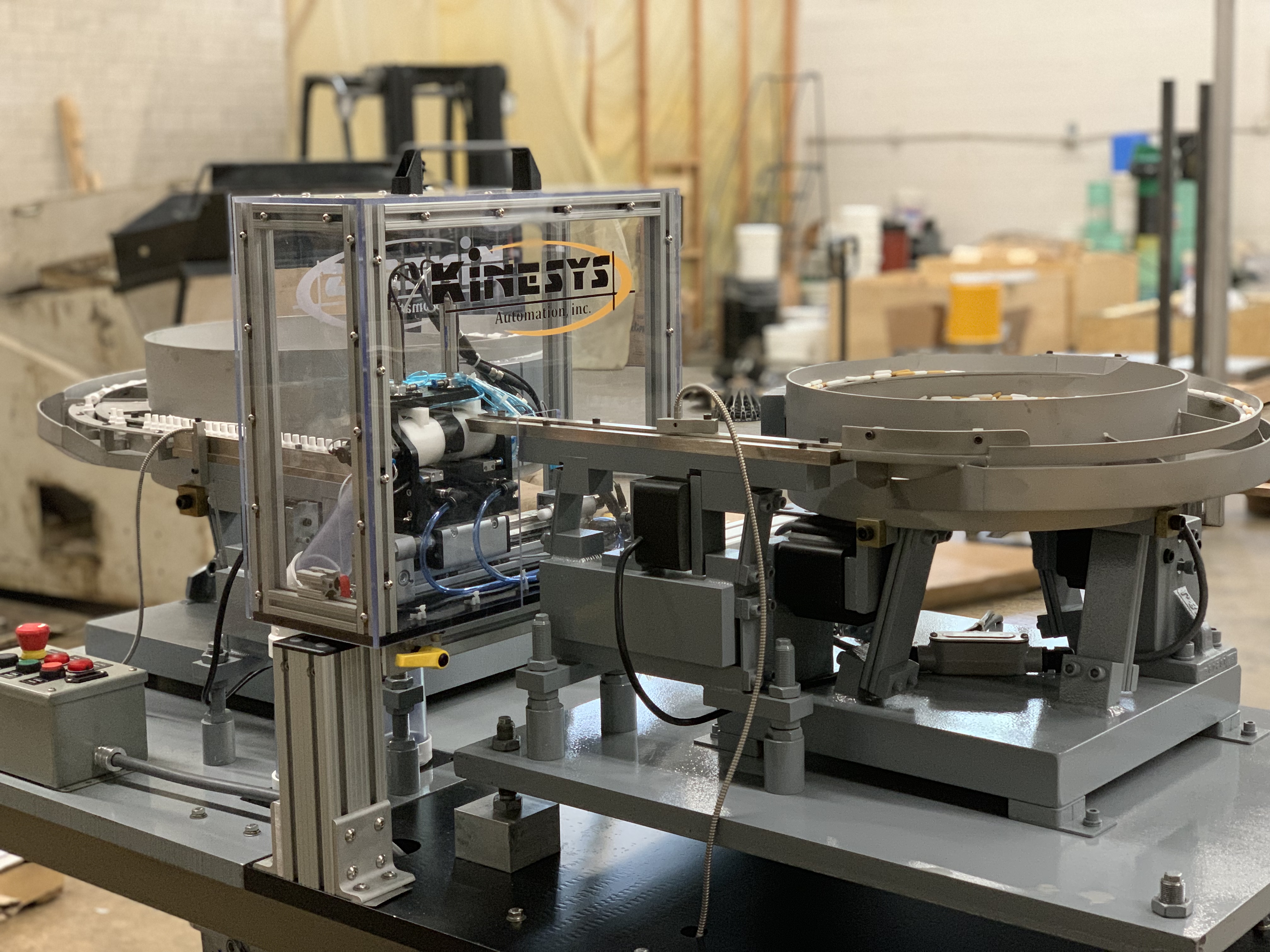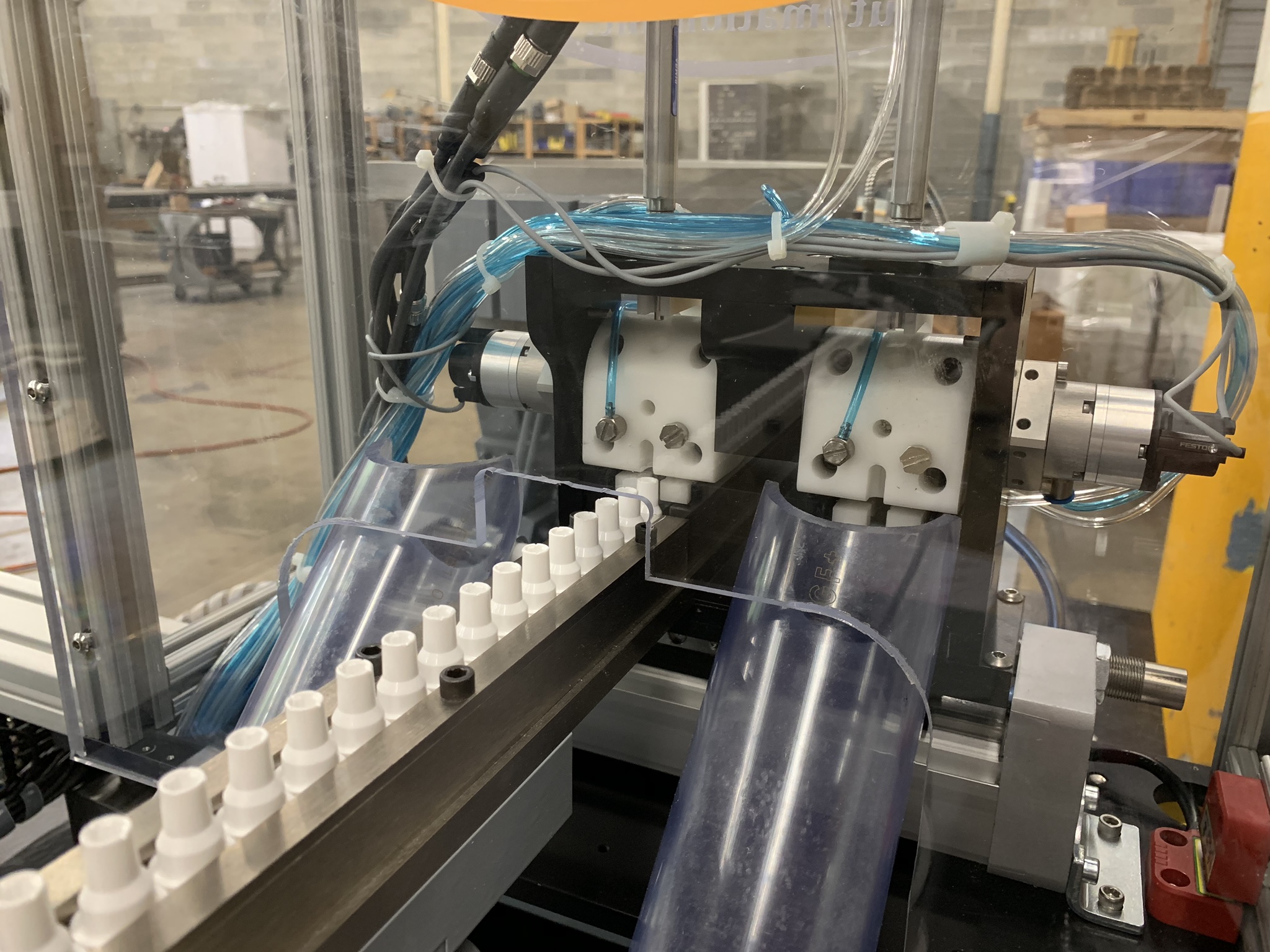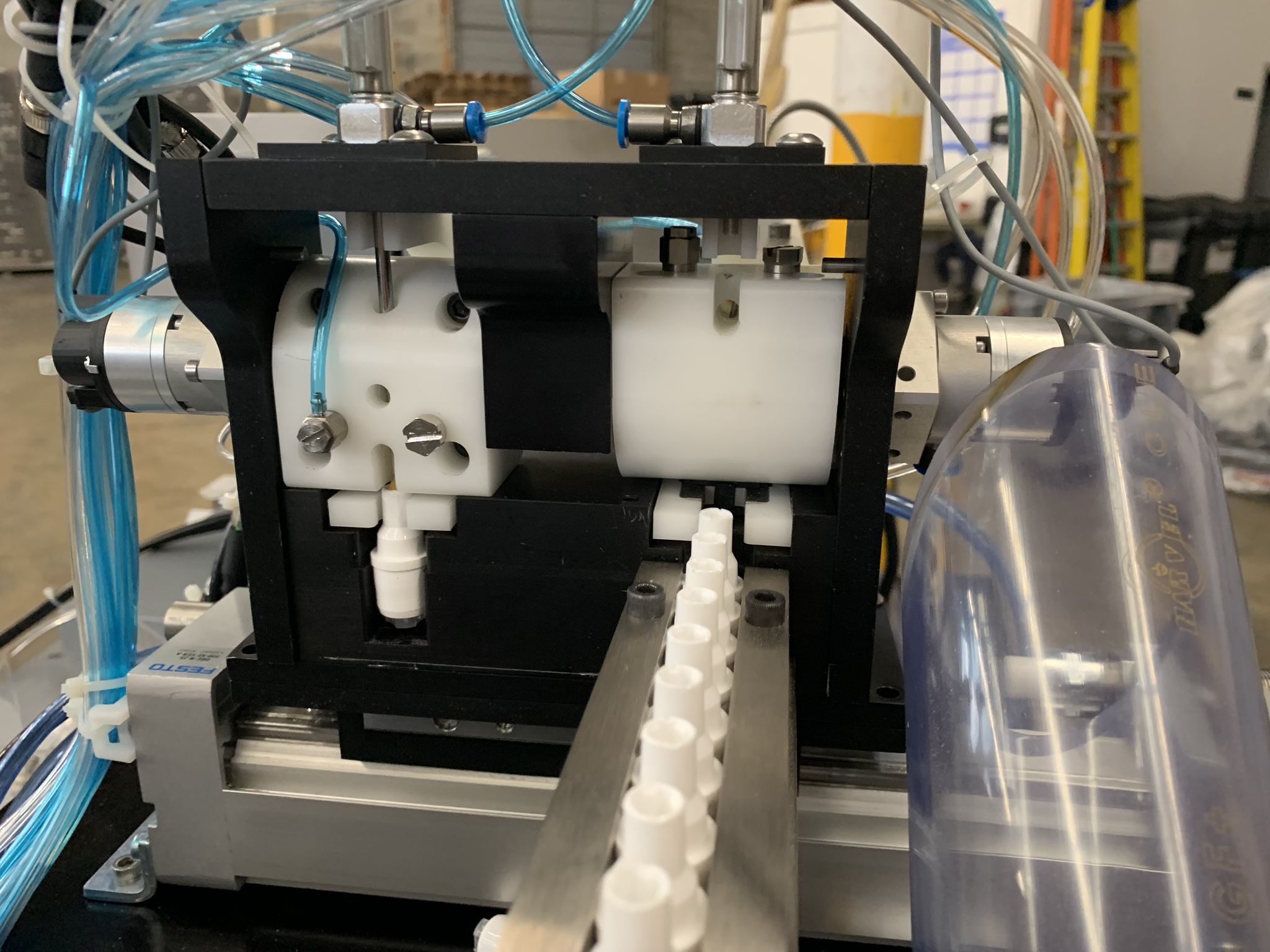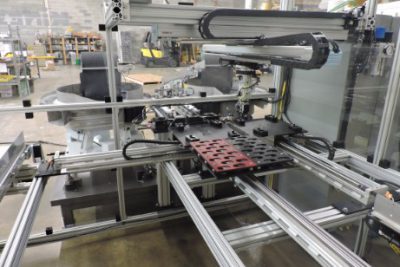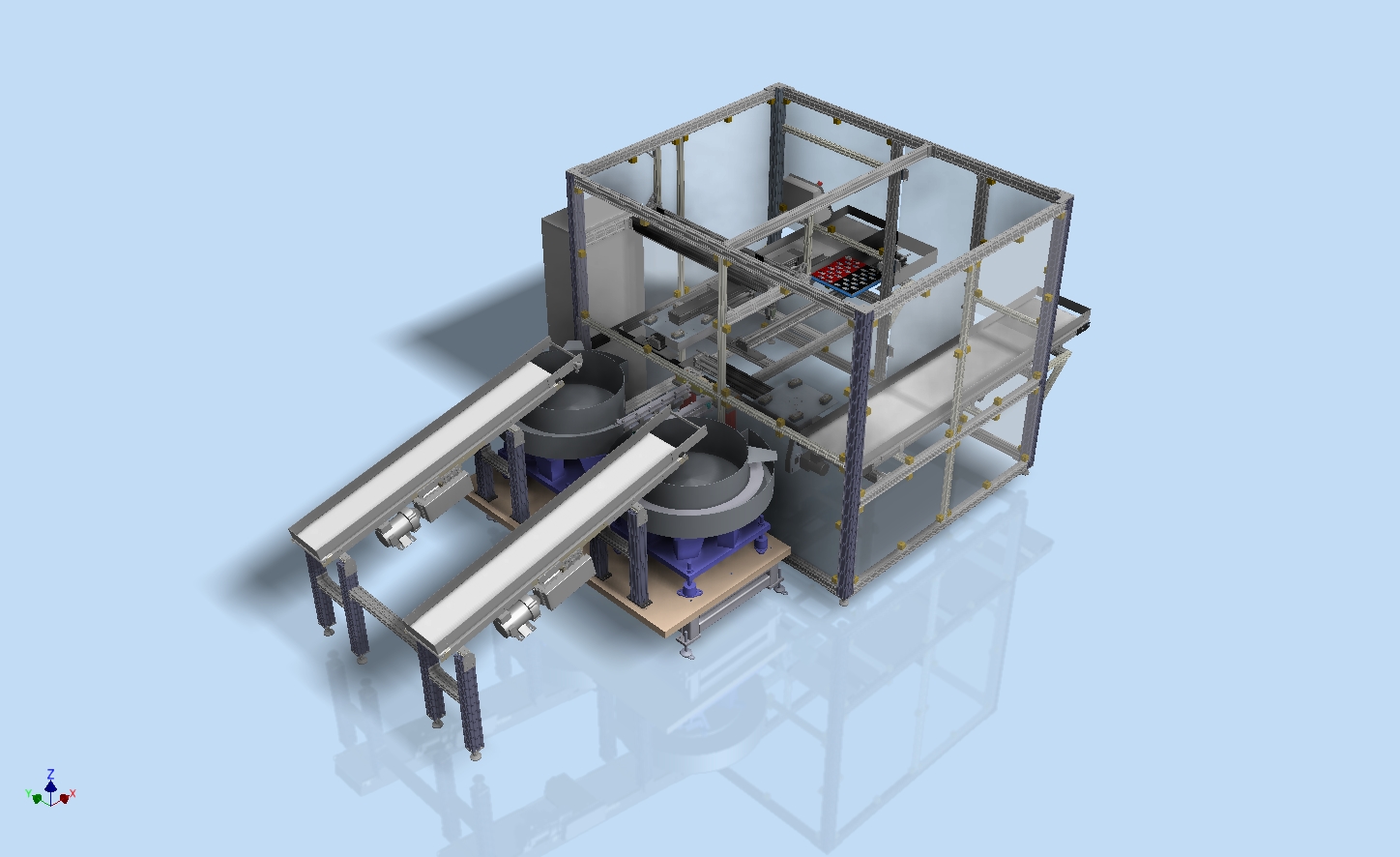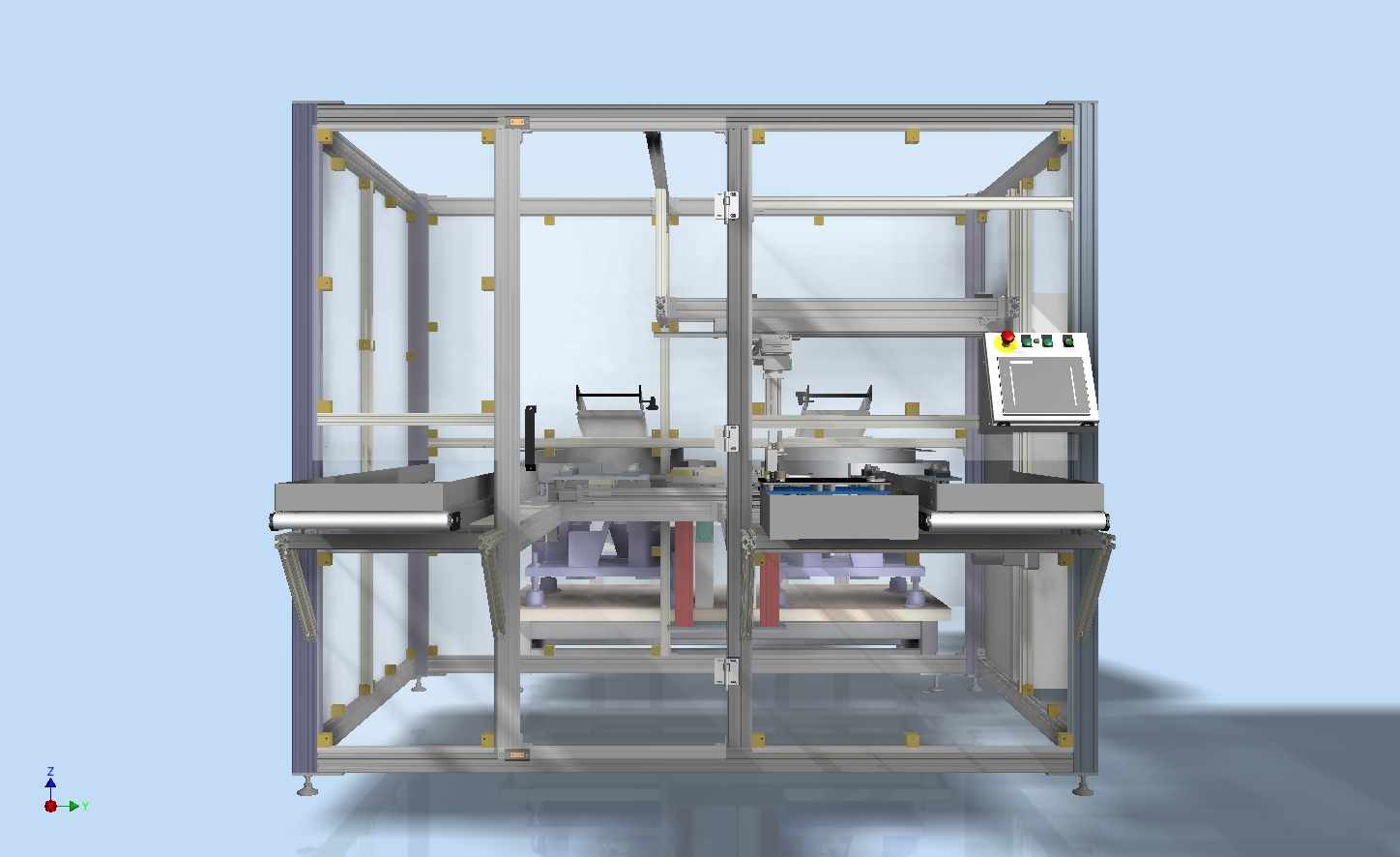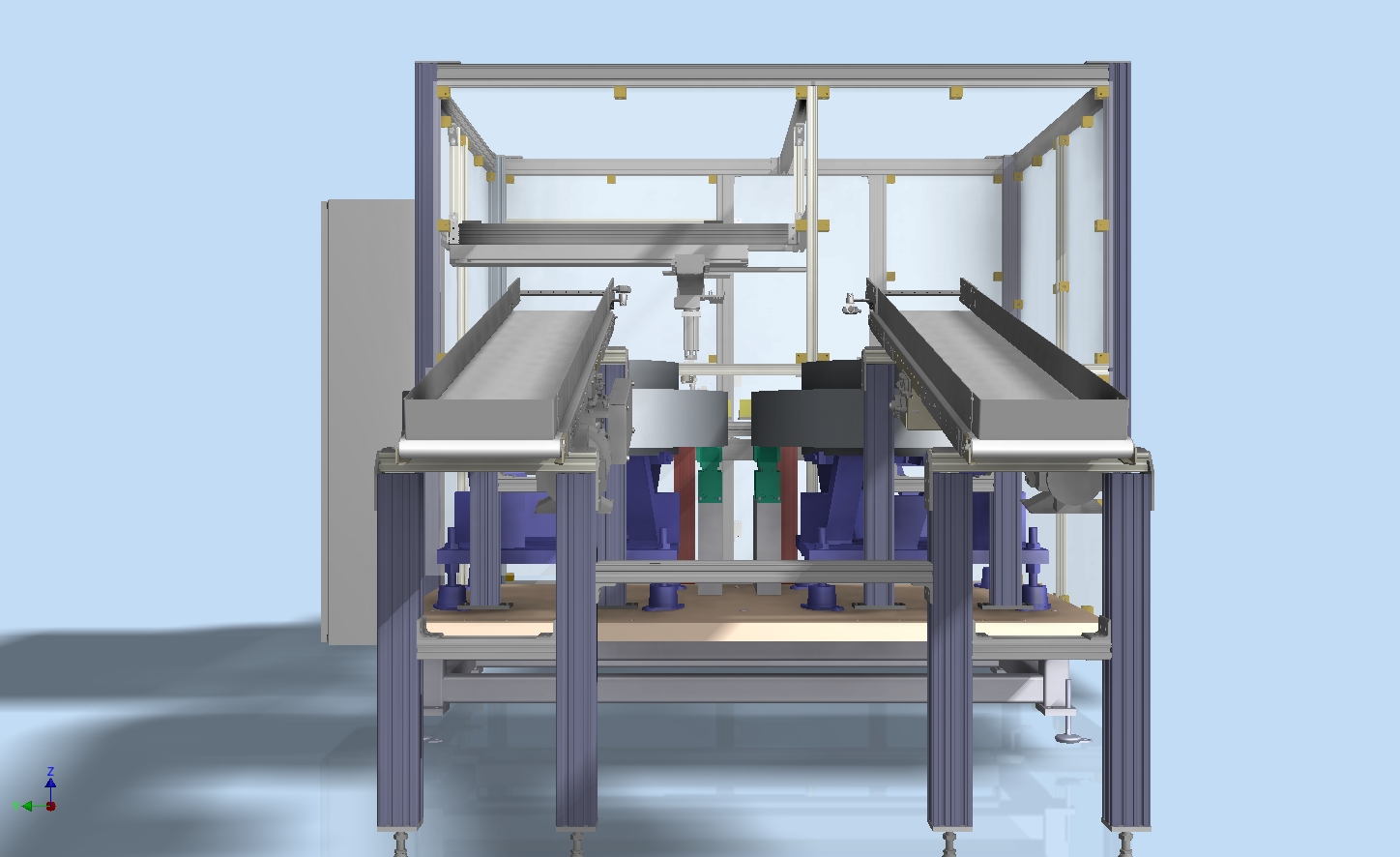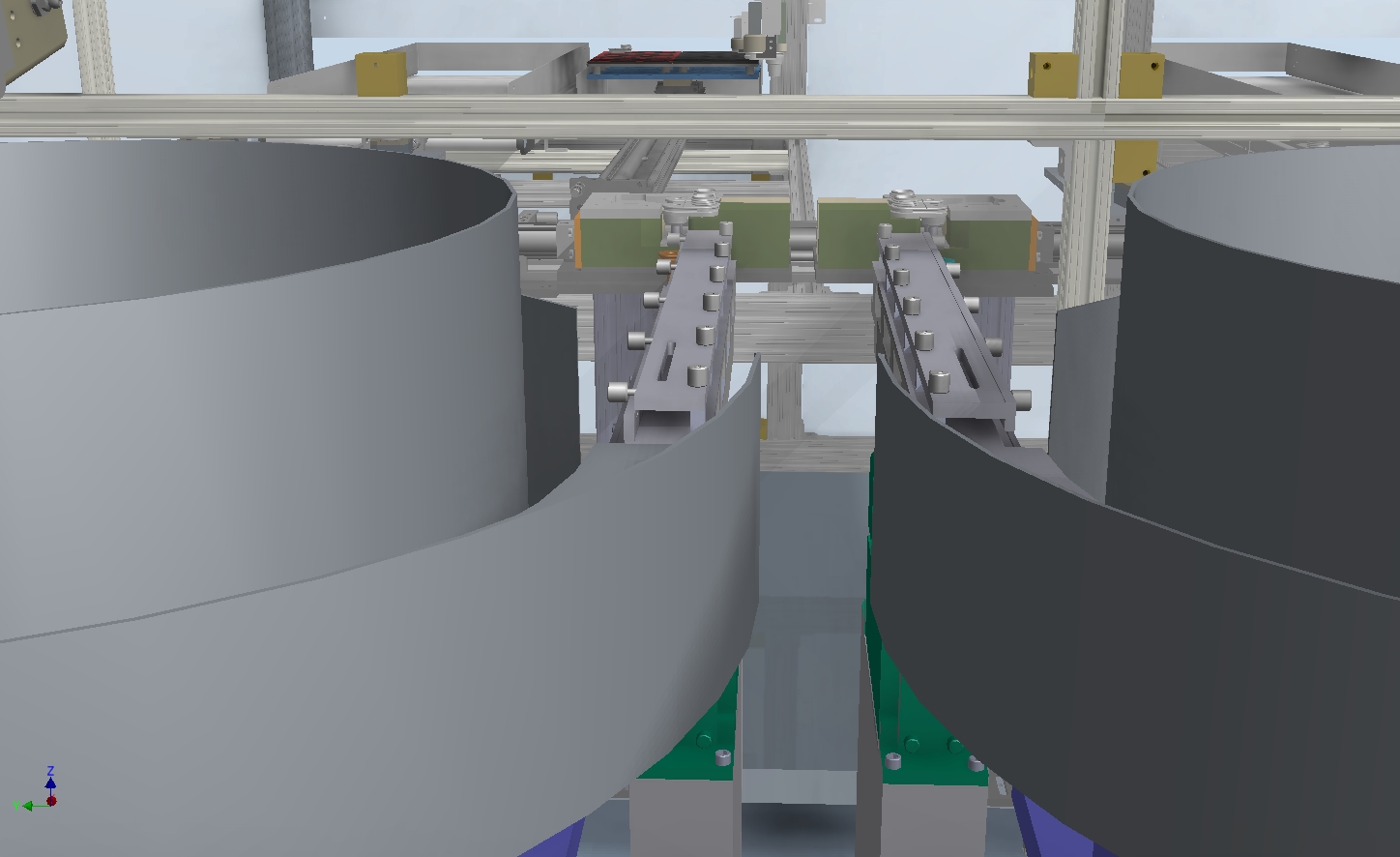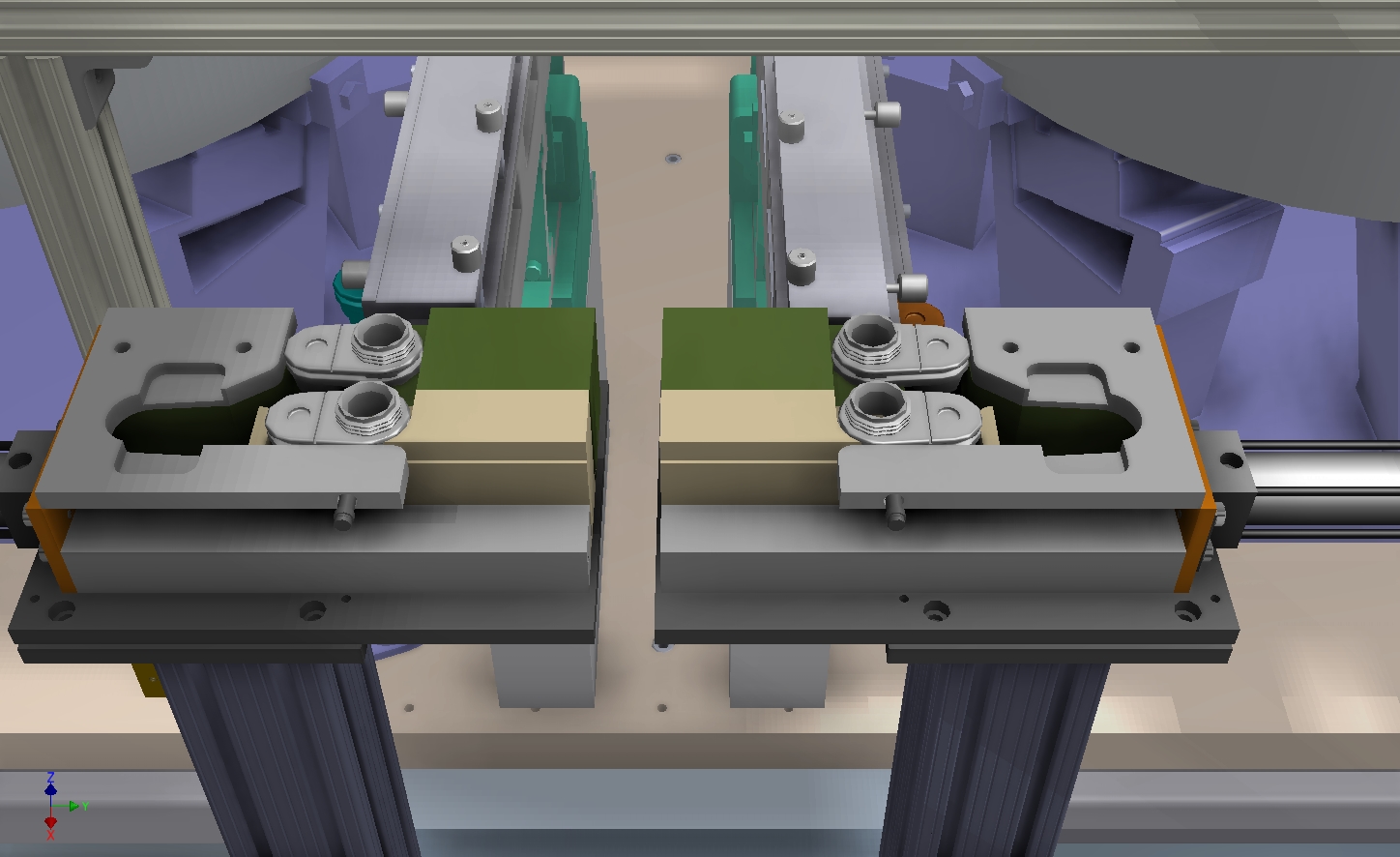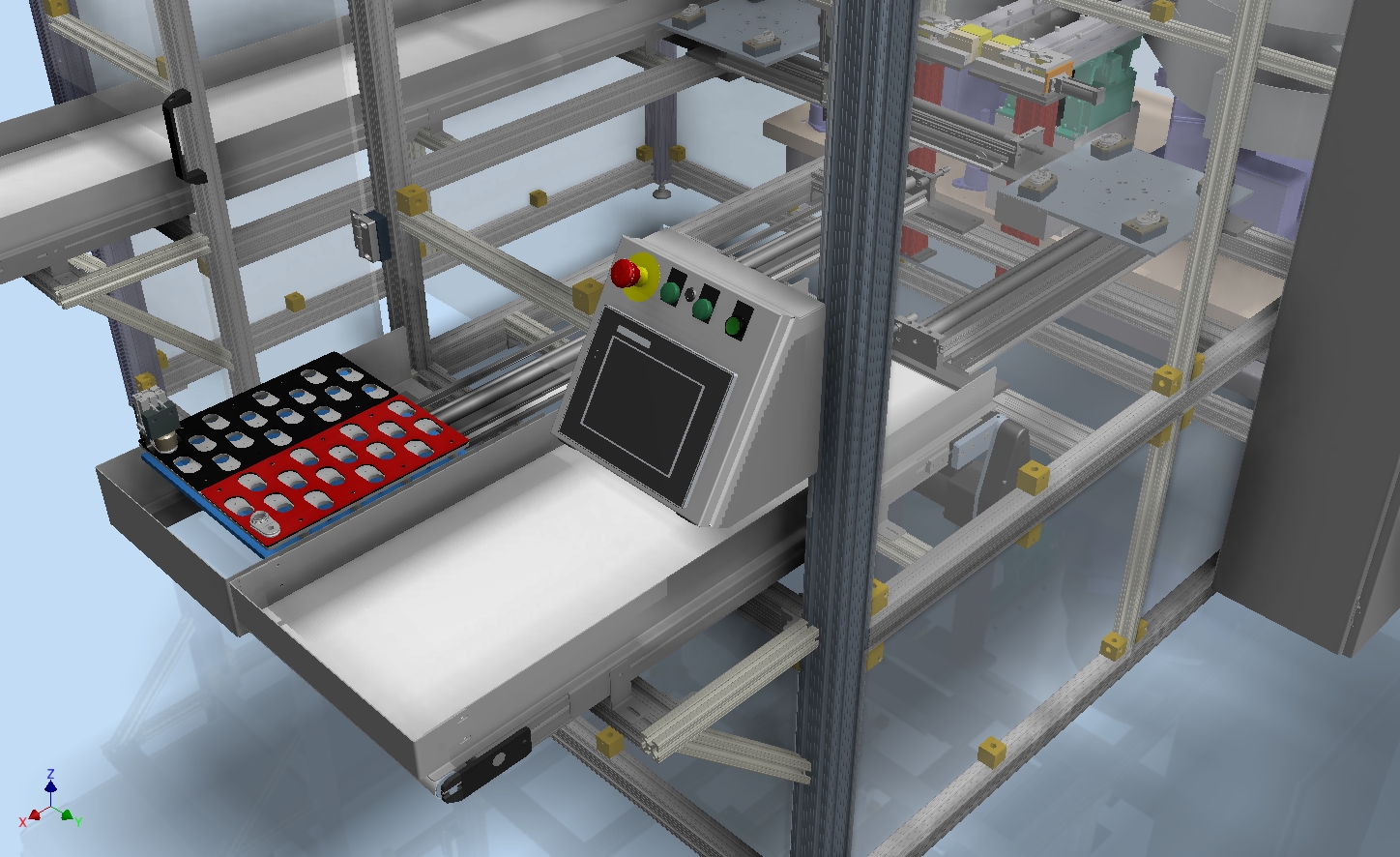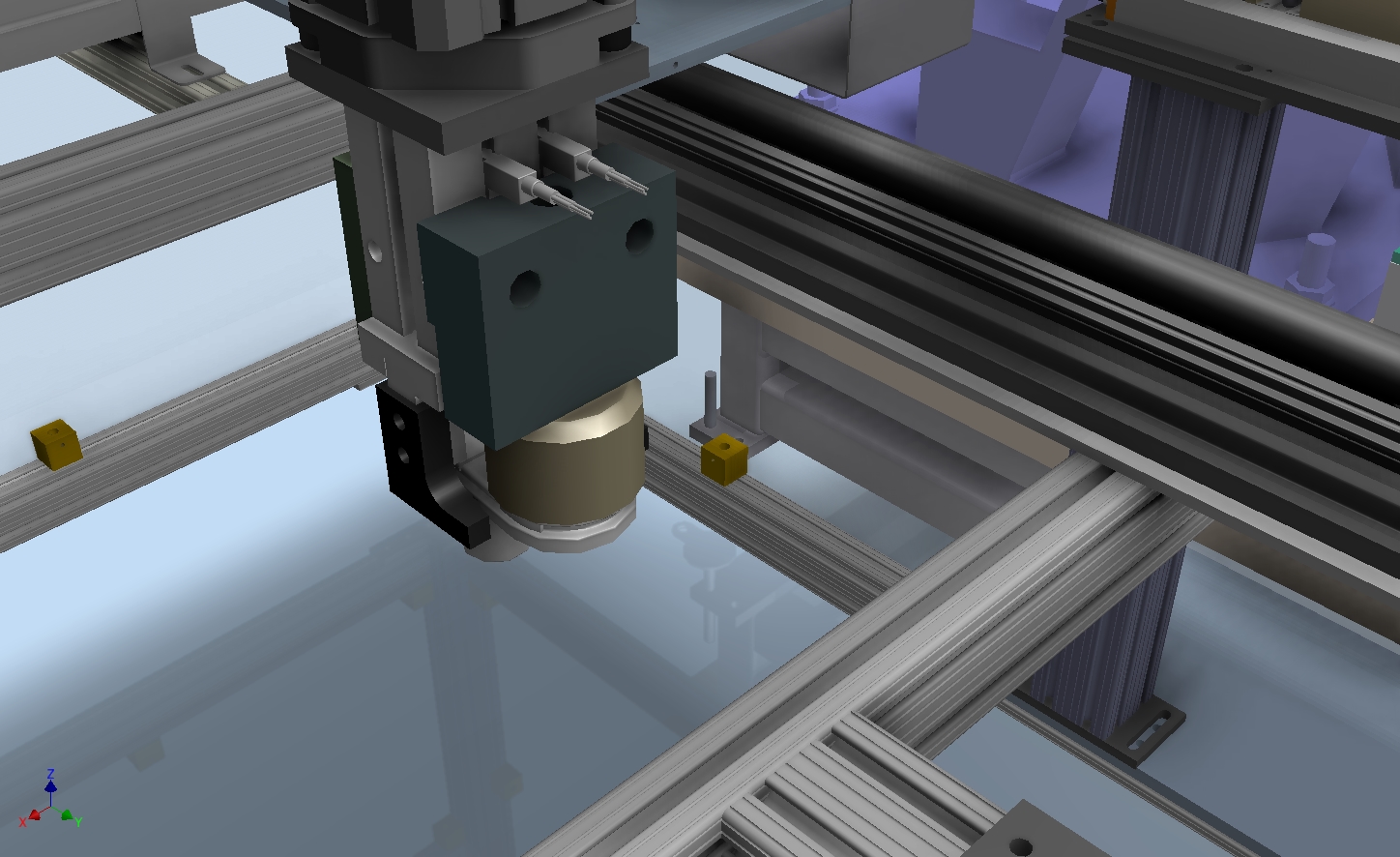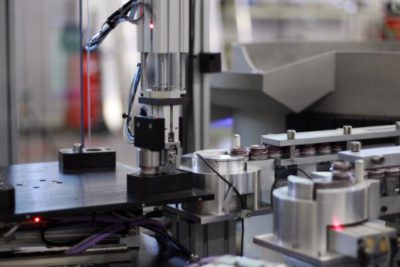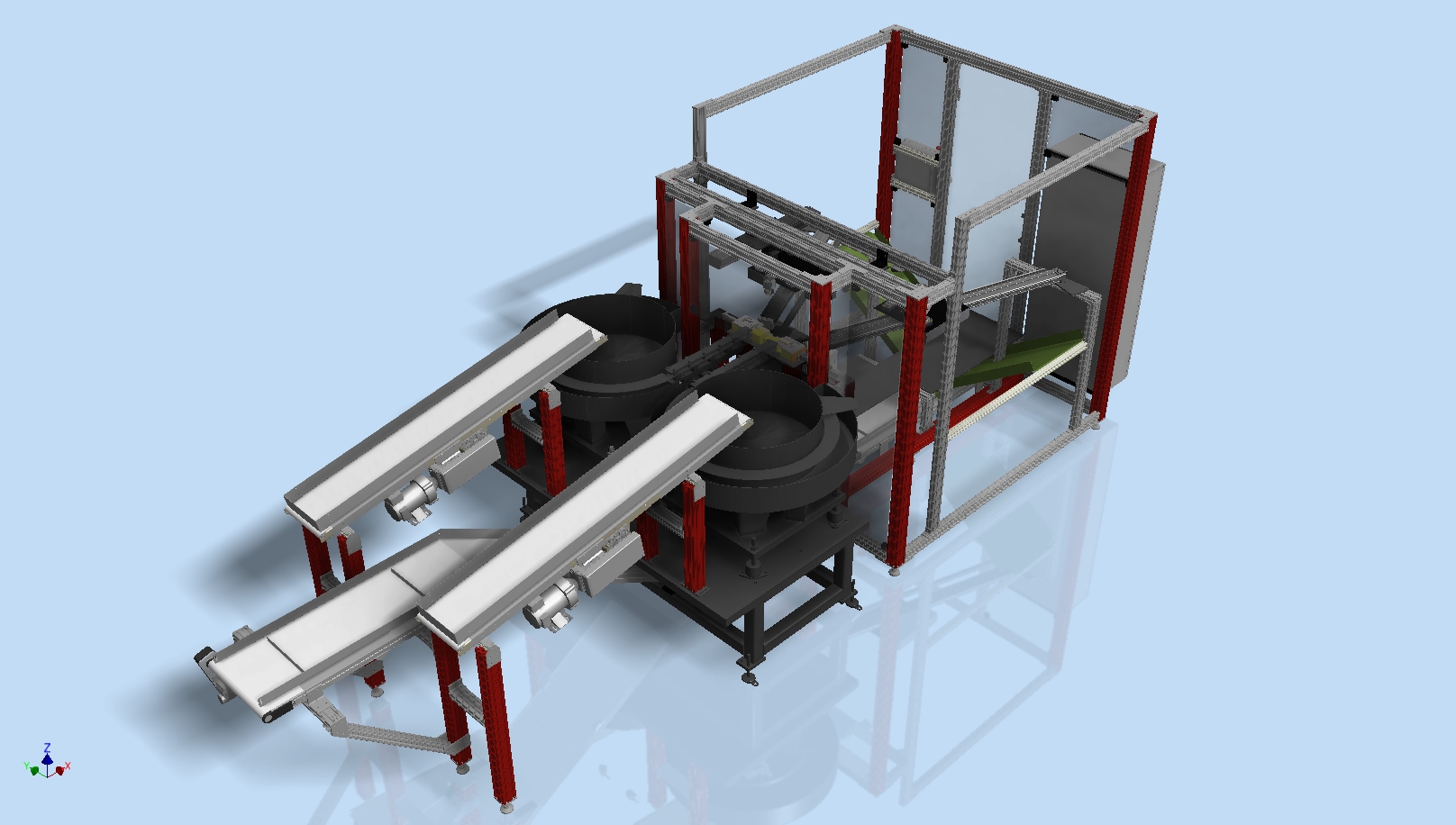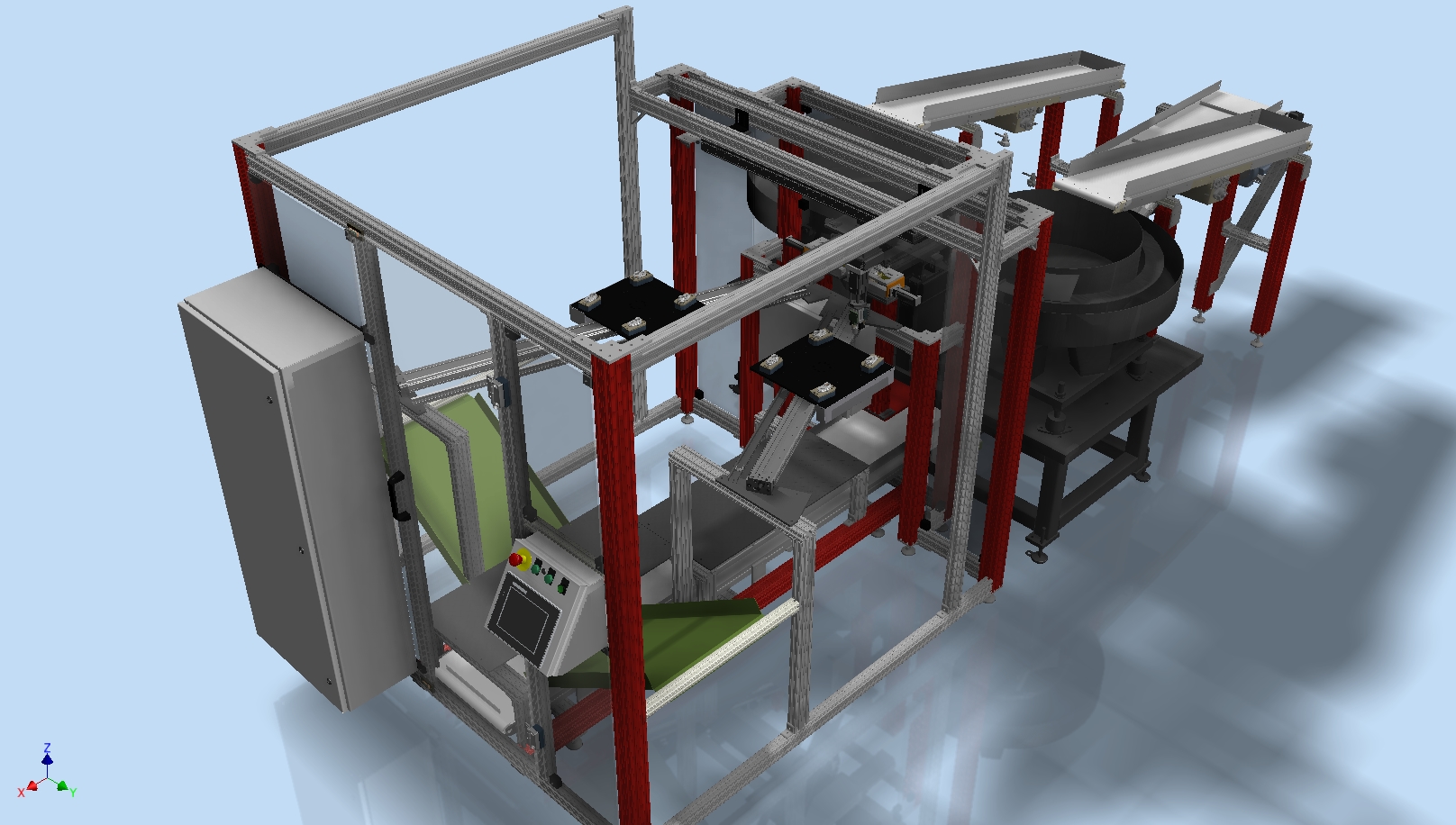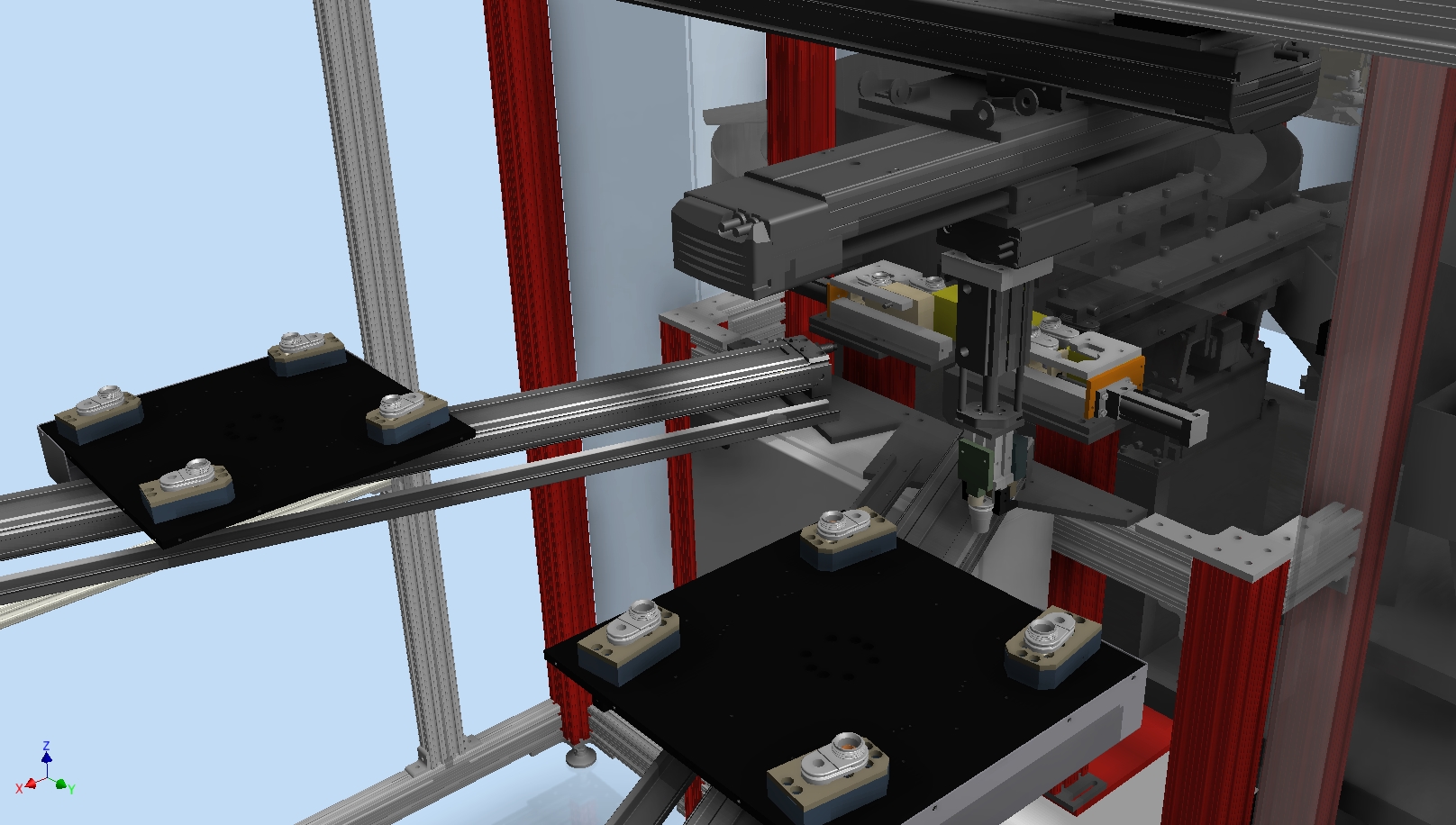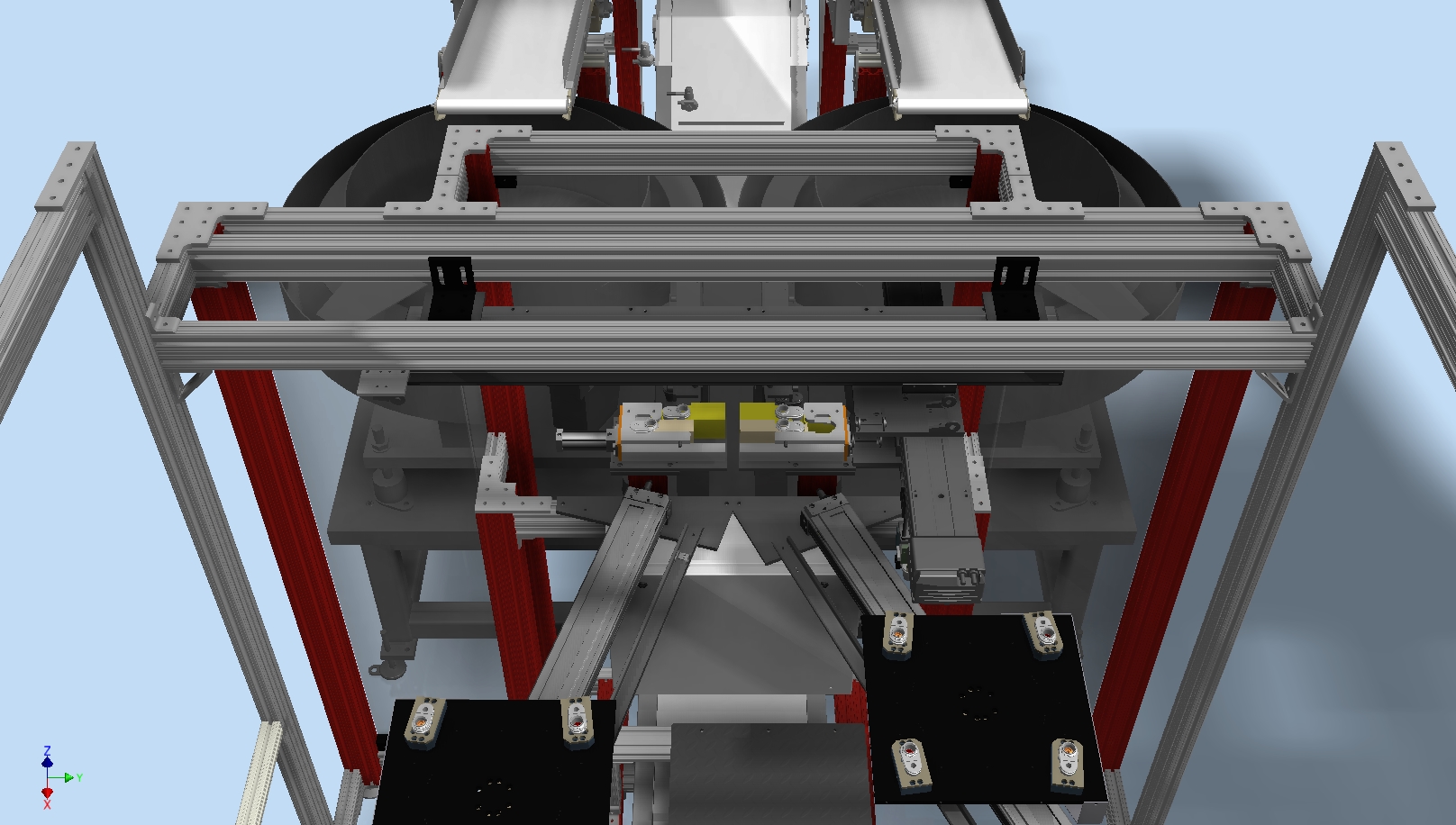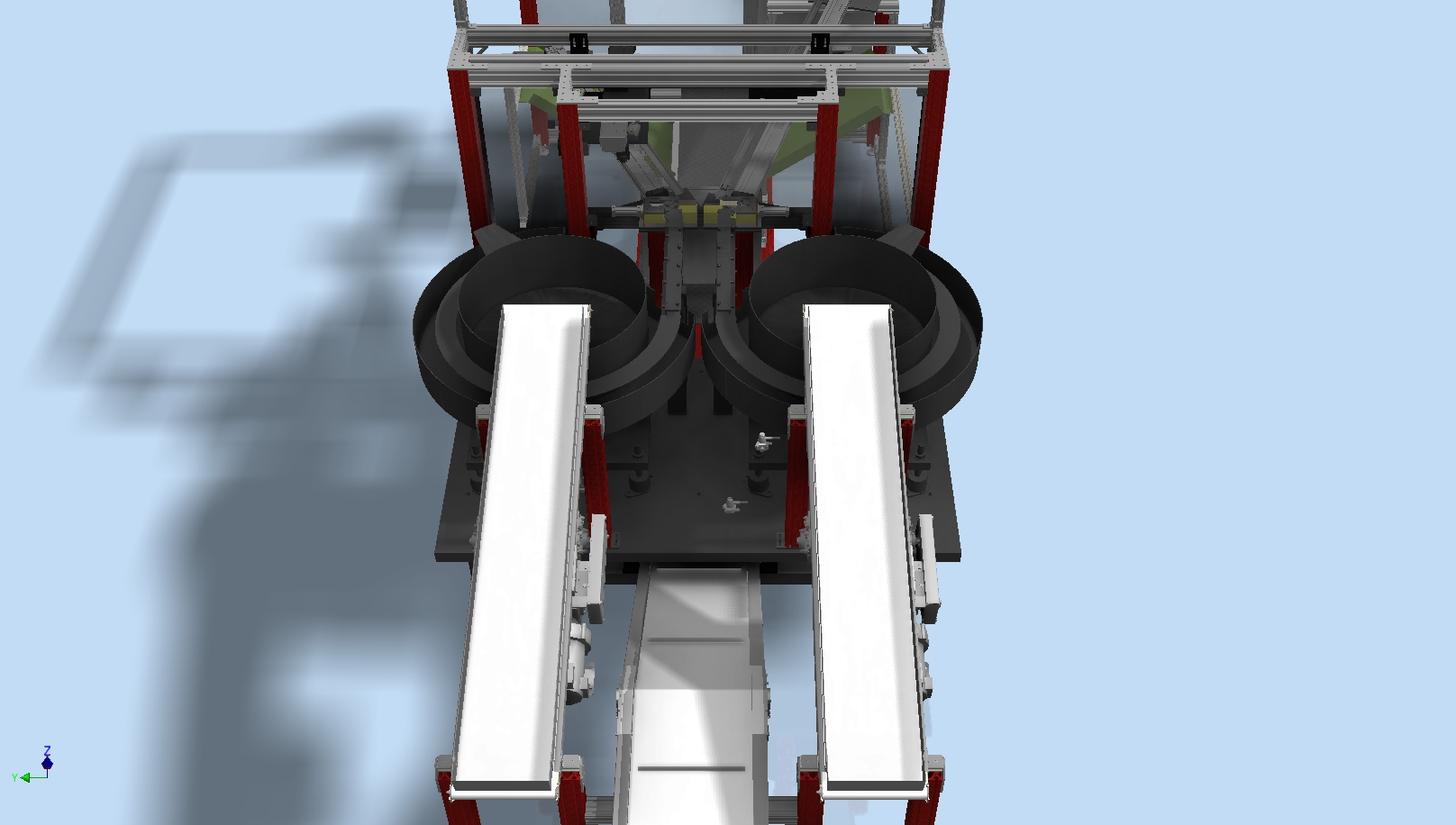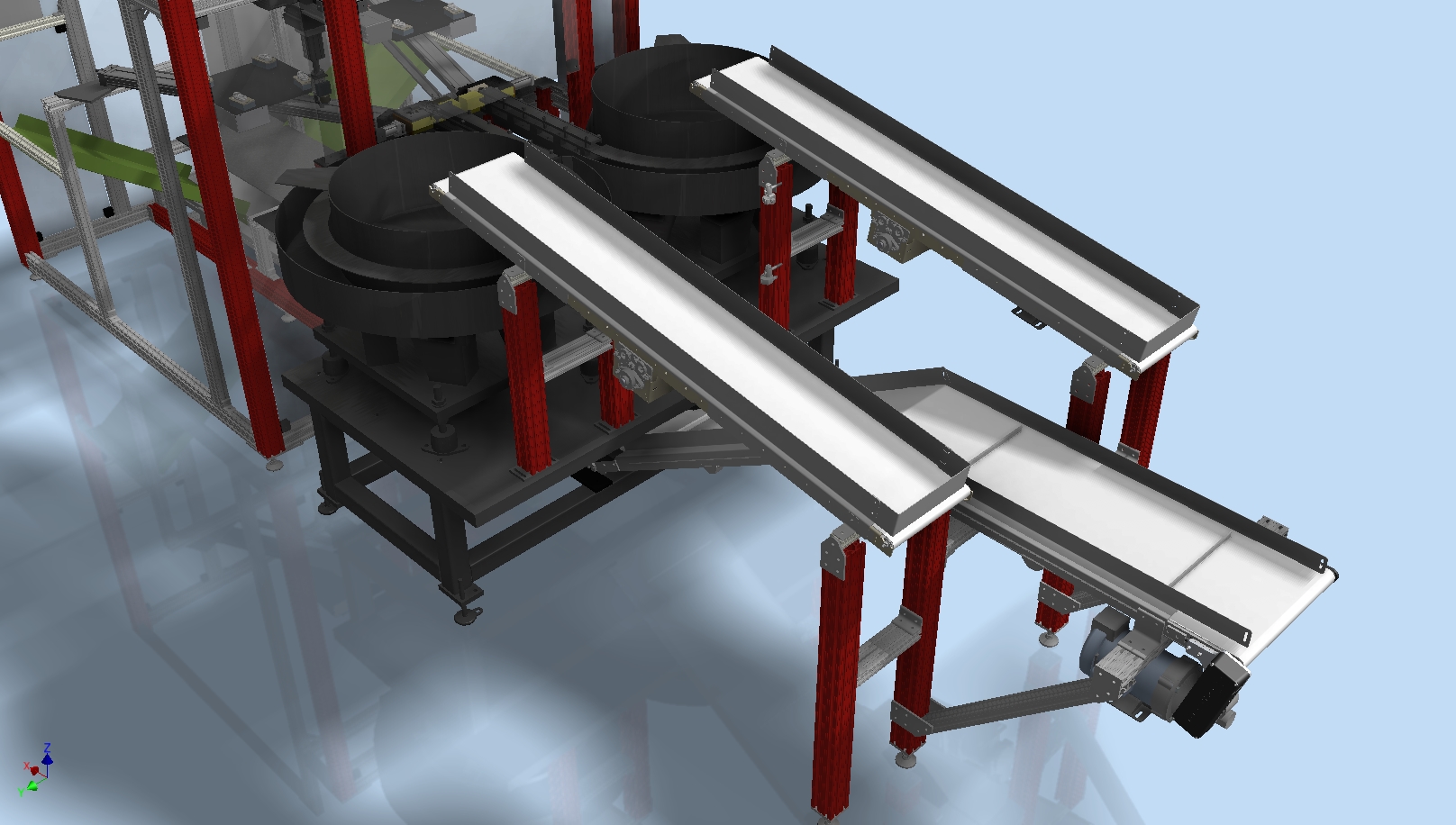KA-17-004 – Kinesys Automation retrofitted the customer’s existing filler with custom nests that hold a family of plastic containers while being filled by weight. The 36 station filler is equipped with a set of alternating nests. One set of nests is dedicated to a small size container, while the second set of nests transforms to accommodate both a small and large size container. During filling of the small container all 36 nests are used, whereas when filling the large size container one set of nests is moved out of the way and the second set of nest transform to accommodate the large container.
Custom Pick and Place Machine 2
KA-16-033 – After the successful installation of a previous machine, a major US battery manufacturer contracted Kinesys Automation to design and develop the ‘second generation’ system of a work cell to load battery terminals into a molding machine, and remove finished battery lids from the molding machines and deliver them to an operator for secondary operations and subsequent palletizing.
The system includes a robot equipped with a custom gripper that selectively picks a negative or positive terminal each oriented by a dedicated feeder bowl, and
places the terminal into one of eight nests on a pair of pallets. Each pallet is independently controlled and positioned by a pneumatically actuated slide. Once a pallet is loaded with the appropriate terminals, it is transported to a position accessible by a dedicated overhead Cartesian robot that picks the leads and loads them into its respective injection molding machine. Prior to the Cartesian robot returning, it first removes the completed lid from the opposite face of the molding machine and delivers the finished part to a dedicated conveyor.
For shorter runs, the system further includes a manual loading station, allowing the operator to load 32 terminals onto a single slide from which the robot can pick and place the terminals into the one of eight nests. This results in an operation that allows the work cell to service different families of battery terminals on each of the two molding machine it supports.
Custom Pick and Place Machine 1
KA-14-009 – A major US battery manufacturer was challenged with reducing the labor cost of producing automotive battery lids. The existing work cell contained two plastic battery lid molding machines that made identical products. Labor savings was to eliminate the manual loading of lead battery terminals into each molding machine, and the manual handling of the finished lids into cases and their subsequent palletizing.
Kinesys Automation was identified as the preferred supplier to provide the system to automate this process. Our engineers worked with the customers’ engineers,
technicians, and production staff to develop the system specifications and design parameters.
Once the specifications were established, Kinesys Automation went about the task of designing a system to eliminate labor. When the engineering for this project was finalized, a design review was executed, meeting the customer’s expectations.
The system includes a robot equipped with a custom gripper that selectively picks a negative or positive terminal each oriented by a dedicated feeder bowl and places the terminal into one of eight nests on a pair of pallets. Each pallet is independently controlled and positioned by a pneumatically actuated slide. Once a pallet is loaded with the appropriate terminals, it is transported to a position accessible by a dedicated overhead Cartesian robot that picks the leads and loads them into its respective injection molding machine. Prior to the Cartesian robot returning, it first removes the completed lid from the opposite face of the molding machine and delivers the finished part to a common conveyor shared by both molding machines.
We have since made the customer a second, nearly identical machine, for a second processing line.


